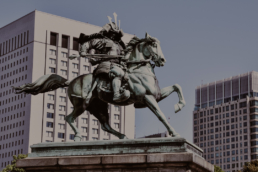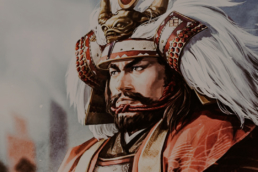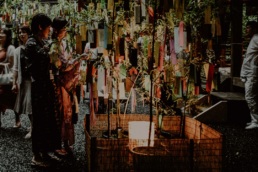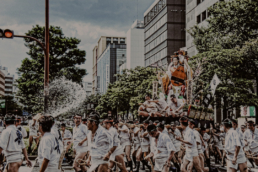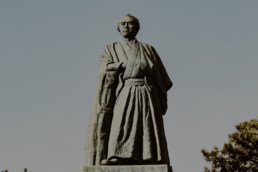Japan History: Kusunoki Masashige
Kusunoki Masashige, (1294 - 4 July 1336) was born in Minato-gawa, province of Settsu, and was a 14th century samurai who fought for the Emperor Go-Daigo in the Genkō war.
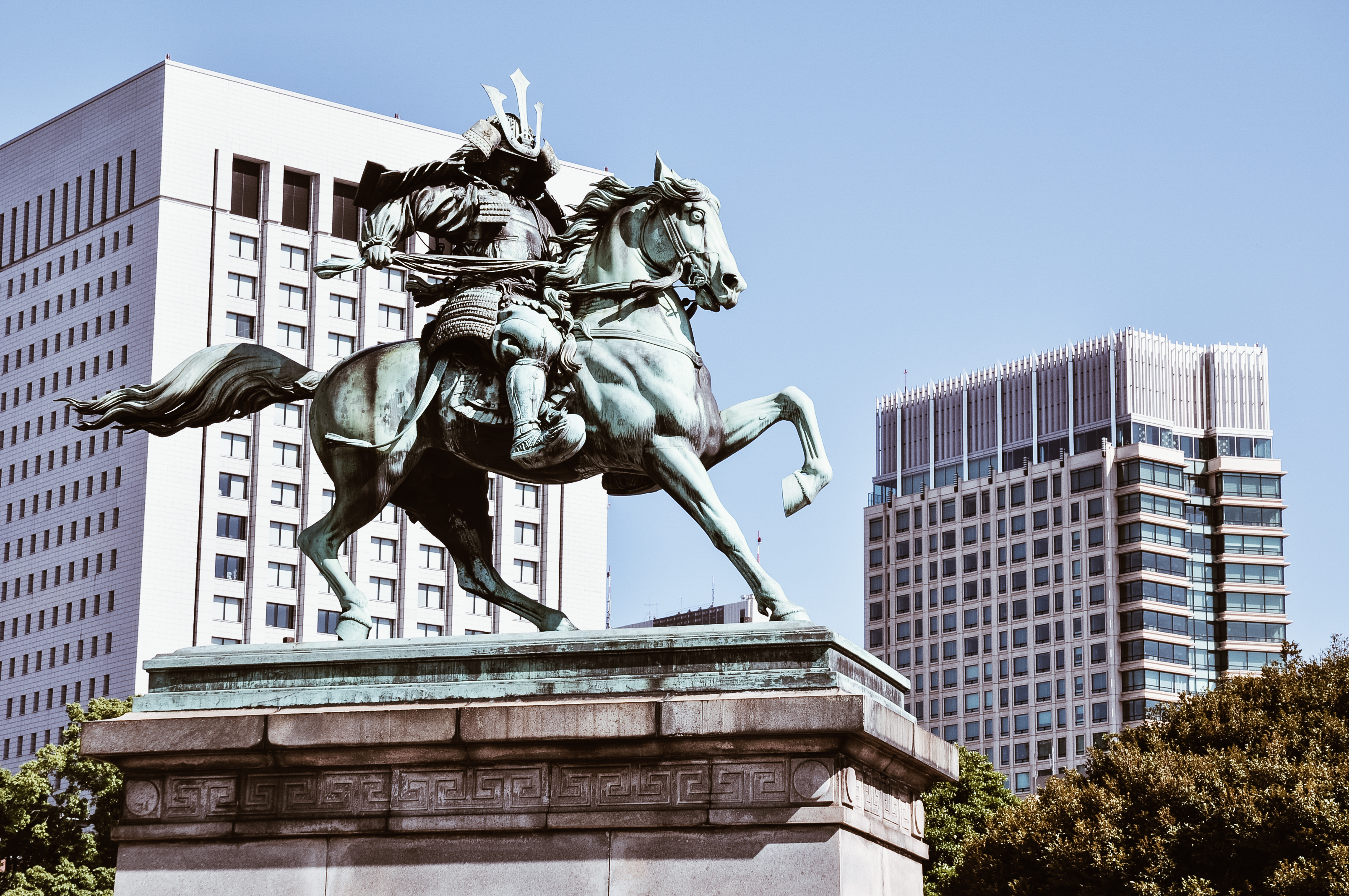
photo credit: ninja.fandom.com
Much of his early education took place in the Kanshin-ji temple in Kawachinagano, in the south of Osaka, where he later organized major restoration work.
Legend has it that the emperor Go-Daigo had a dream in which he was taking refuge under a camphor tree (the "kusunoki"). This dream brought him to the surname of the warrior who would support him. Indeed, in 1331 Kusunoki joined the emperor Go-Daigo in a revolt to wrest government power from the shogunate, the military dictatorship that had dominated Japan since 1192. Although numerically stronger shogunate troops captured the emperor, Kusunoki fled continuing to use guerrilla tactics.
The capture of Kusunoki near Nara in 1332 proved to be a serious threat to the government. The shogun then concentrated all his forces against Kusunoki. In one of the most famous battles in Japanese history, Kusunoki successfully defended the fortress of Chihaya against the upper shogunal forces.
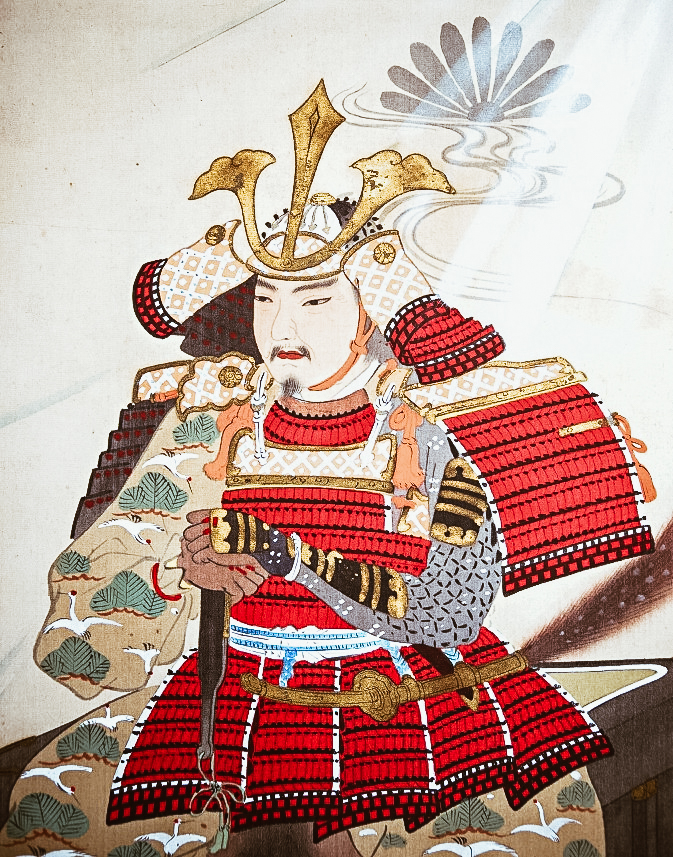
photo credit: davtov2000.blogspot.com
From 1333 to 1335
In 1333, Go-Daigo rewarded Masashige with the governorate of the province of Settsu and the province of Kawachi and promoted him to the fifth degree. Subsequently, he received the appointment on the Records Office and Settlement Board. However, one of the loyalist generals, Ashikaga Takauji, betrayed Go-Daigo and led an army against Kusunoki. Takauji took possession of Kyoto, but only temporarily before Nitta Yoshisada and Masashige forced Takauji to flee. In 1336 Takauji was again a threat to Kyoto.
During the short period following the imperial rule, Kusunoki was governor of the central Japanese provinces of Settsu. The real power in the countryside, however, continued to be held by the great hereditary lords, Ashikaga Takauji and Nitta Yoshisada. The latter openly challenged themselves to obtain the loyalty of minor feudal leaders.
Kusunoki suggested to the Emperor to take refuge on the sacred Mount Hiei and allow Takauji to take Kyoto. This is to allow him to descend from the mountain and, with the help of the monks of Mount Hiei, trap Takauji.
Go-Daigo was not willing to leave the capital and insisted that Kusunoki meet Takauji's forces on the field. Kusunoki, in what would later be seen as the last act of samurai loyalty, accepted obediently. The battle, which took place in Minatogawa, in present-day Chūō-ku, Kobe, was a tactical disaster. There are two reports of the proposal made by Kusunoki Masashige to the emperor Go-Daigo, the Taiheiki and the Baisho Ron, entbe ingorati. One was that they would group together and attack from two sides, the other was that they would take General Takauji back on their side.
Kusunoki's army was only 50 of the 700 knights. According to legend, the last words of his brother Masasue were Shichisei Hōkoku! ("I wish I had seven lives to give to my emperor!") Obviously Kusunoki Masashige agreed.
At his death, his head was sent to Kanshin-ji and buried in a tomb known as Kubi-zuka.
Eboshigata Castle and Ishibotoke Castle were both built along the route of the Koya Kaido, a famous pilgrimage route that stretches between Kyoto and Koyasan. Designed not only to protect the path from bandits, these were also an important source of income as travelers were forced to pay a toll.
From 1335 to the Meiji restoration
In 1335 Go-Daigo sided with Nitta Yoshisada against Ashikaga Takauji. As head of the imperial forces, Kusunoki defeated Takauji's troops in January 1336 and forced him to flee the capital. A few months later, however, Takauji returned to the head of a large army. Kusunoki suggested temporarily withdrawing so he could fight Takauji's forces at a point where the terrain was more favorable. The emperor insisted that Kusunoki meet enemy forces before occupying the capital. In the final battle on the Minato River, near the modern Kobe, Kusunoki fought bravely for many hours. His troops were finally overwhelmed and committed suicide rather than face capture.
His son, Kusunoki Masatsura, served as the emperor's successor, 12-year-old Go-Murakami, in a relationship of mutual trust that reflected the figure of his father Kusunoki and kept the flame of loyal resistance alive.
After the imperial restoration in 1868, a splendid sanctuary was erected on the site of Kusunoki's death. His loyalty to the emperor and his being one of the greatest military strategists in Japanese history, made him a legendary figure. He also received the highest decoration from the Japanese Meiji government in 1880.

photo credit: wikipedia.org
Legend
After the introduction of Neoconfucianism as a state philosophy by the Tokugawa shogunate, Kusunoki Masashige was declared with the emperor Go-Daigo forerunner of the synocentric absolutists. During the Edo period, scholars and samurai who were influenced by neoconfucian theories created the legend of Kusunoki. They consecrated him patriotic hero, with the name of Nankō or Dai-Nankō, incarnation of loyalty, courage and devotion to the Emperor. Kusunoki later became a sort of patron saint of the WWII suicide bombers. His spiritual heirs were those who sacrificed their lives for the emperor.
Hiroshima and Nagasaki, not to forget
Hiroshima and Nagasaki, two symbolic cities of Japan that remind us of the greatest mistake humanity has ever made.
The sad legacy of Hiroshima and Nagasaki
Located west of Honshū and facing the sea, Hiroshima (広島市) is the largest port city in Chugoku.

photo credits: viaggi-lowcost.info
Hiroshima
Founded by the daimyo Mōri Terumoto in 1589, Hiroshima passed into the hands of various administrations. In 1938 it became a military centre of strategic and military importance throughout the Second World War. No bombing struck the city until that tragic August 6, 1945, at 08:16:08. "Little Boy", the first atomic bomb ever used in a conflict, was launched by the United States over the city causing thousands of victims instantly. However, these increased in the months following the causes of radioactive fallout. Despite the radioactivity, the city was rebuilt in 1949 regaining its industrial importance.
The damage caused by the atomic bomb persisted in the following years and in 1955 the Hijiyama medical centre was established, where to welcome, study and treat the sick. In the early 70's the "Atomic Bomb Casualty Commission" was born to control the land and the air.
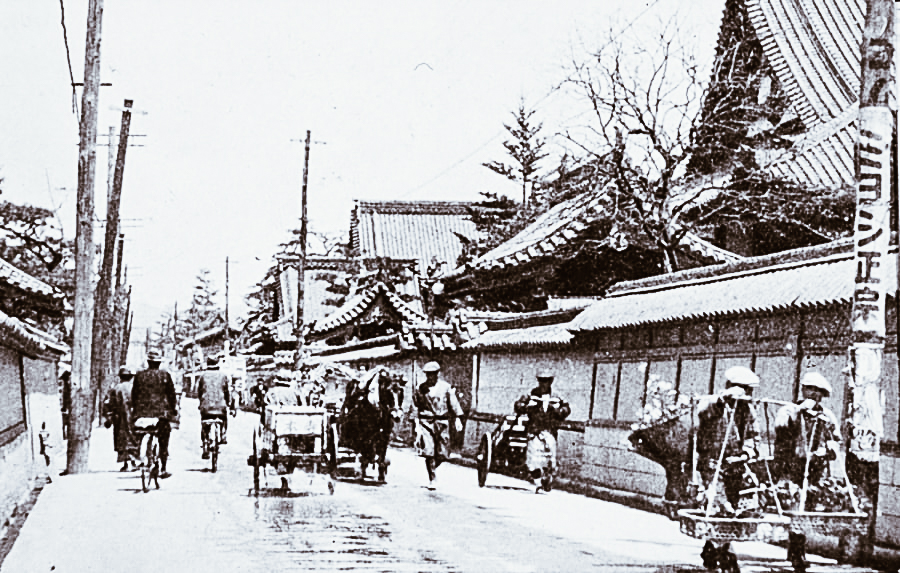
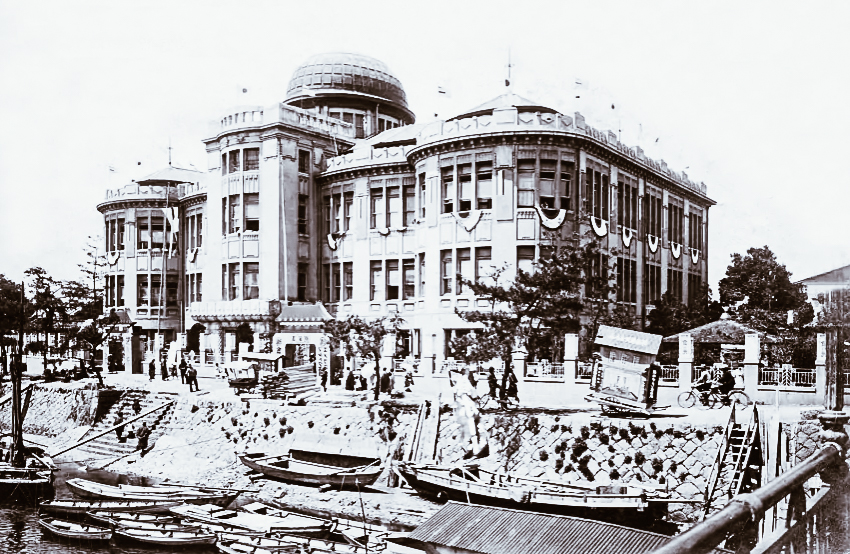
photo credits: focus.it
Although the city was razed to the ground on that tragic day, only one building resisted bringing with it the sad signs of what happened. We are talking about the Genbaku Dome (原爆ドーム, the dome of the atomic bomb). However, before the war, the palace was the seat of the ancient chamber of commerce, today it is classified world heritage by UNESCO as a testimony to the devastation of nuclear weapons.
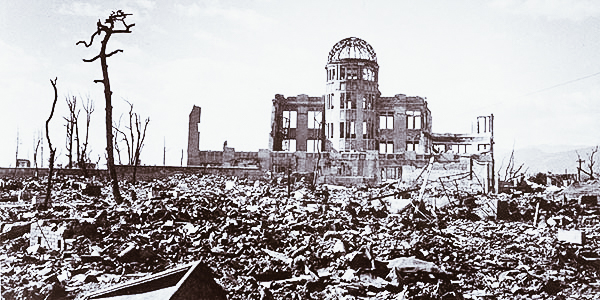
photo credits: agrpress.it
Visit Hiroshima
What history has left us must be a warning to the future and both Hiroshima and Nagasaki are a living example. In this regard, if you plan to visit Hiroshima, one of the milestones is the Peace Park. It includes the Peace Museum and the Cenotaph of the memorial for the victims of the atomic bomb. The latter, built by the architect Kenzo Tange, lists the victims of the bomb whose epitaph reads: "May souls rest here in peace so that hell is not repeated". We cannot then forget the dome of the bomb.
For any information regarding the Hiroshima Peace Memorial Museum you can visit the official website in English.
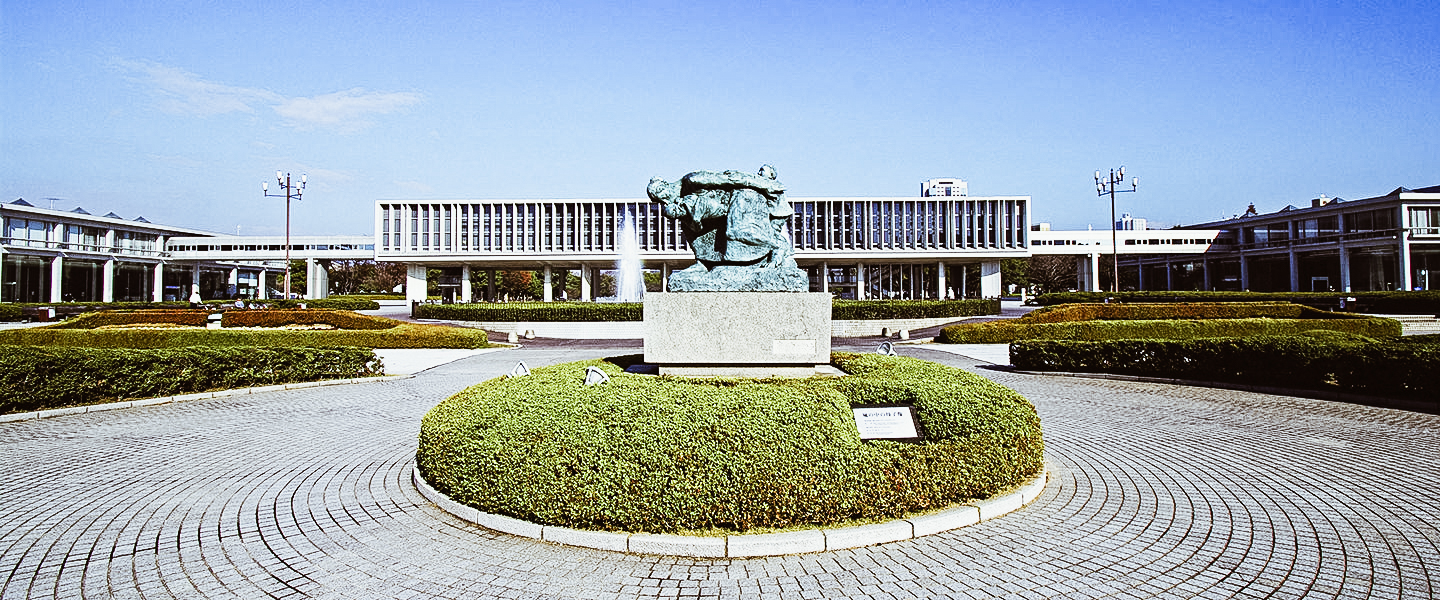
photo credits: visithiroshima.net
In the city, we can find other interesting museums, such as the Hiroshima Museum of Art. Here the museum displays a vast collection of modern European art, from romanticism to impressionism. Moreover, the Hiroshima MOCA (museum of contemporary art) exhibits the works of Japanese and foreign artists after the Second World War.
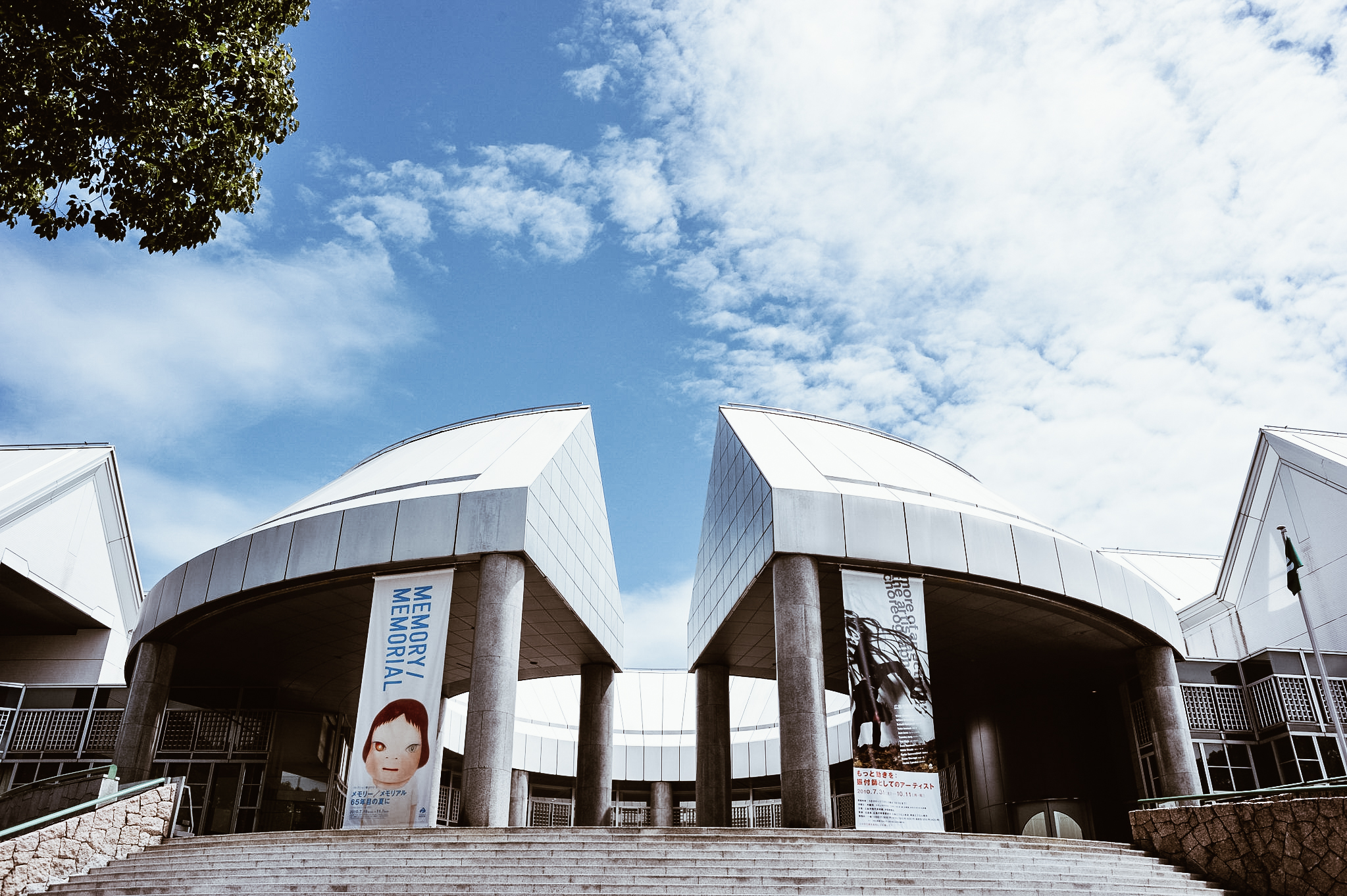
photo credits: maitreyoda
The Shukkei-en garden and Hiroshima Castle
The Shukkei-en garden was built in 1620 during Shigeyasu Ueda on the orders of Asano Nagaakira, daimyo of Hiroshima han (fief). Used as a residence of the Asano family in 1940, and then given to the prefecture of Hiroshima. Located very close to the zero point of the nuclear attack, the Shukkei-en suffered extensive damage and later became a refuge for war victims. After renovations, it reopened to the public in 1951.
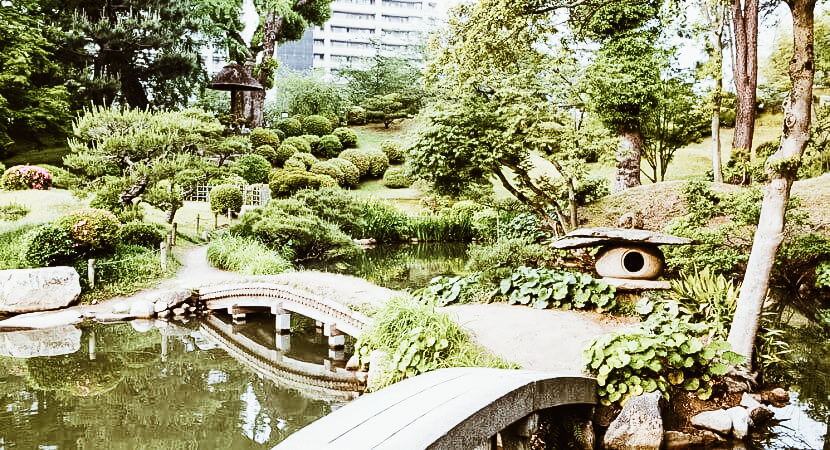
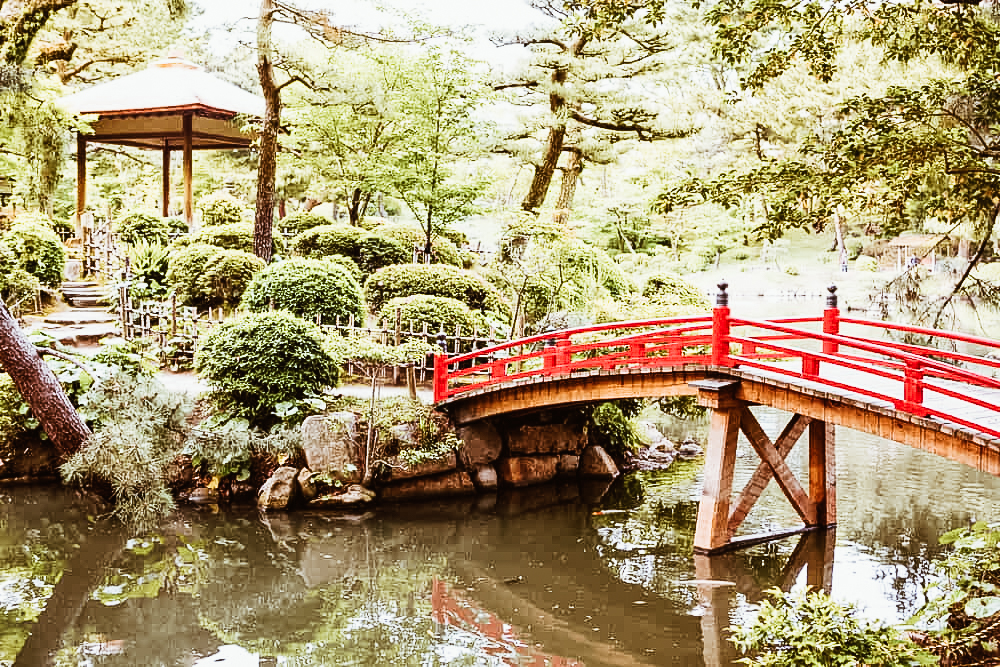
photo credits: thetruejapan.com
A Castle is closely connected to this wonderful garden, it's the (広島城) Hiroshima-jō also called (鯉城) Rijō literally Carp-Castle. In fact, the exterior, completely painted in black, would refer to the image of a black carp. Built in 1590, it became the residence of the lord of the feud, Mori Terumoto. Destroyed by atomic bombing, it was faithfully rebuilt in 1958.
It is currently the home of the Hiroshima history and culture museum surrounded by a public park. From the top of the castle, you can enjoy a splendid view of the port of Hiroshima and the island of Miyajima.

photo credits: fr.japantravel.com
To discover all the attractions and wonderful temples that rise in Hiroshima, you can visit the official site of the city (in English).
Nagasaki
Like Hiroshima, Nagasaki (長崎市) is today an important international trading and port centre.
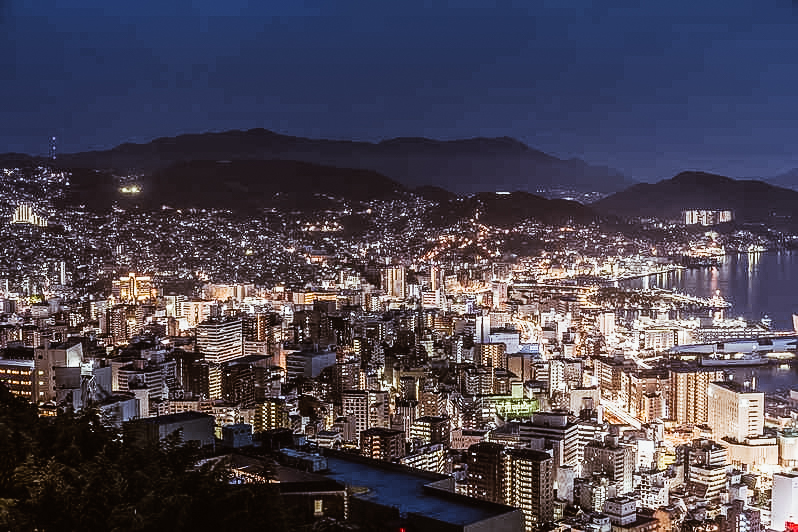
photo credits: getyourguide.it
This modern town with a thriving maritime economy developed in the 11th century, expanding rapidly. In 1568 the daimyo Ōmura Sumitada converted to Christianity and made Nagasaki an international port, thus opening it to the influence of Europe. However, when the army chief Toyotomi Hideyoshi came to power, the city turned into a nightmare for Christians. In fact, on February 5, 1597, 26 people who professed the Christian religion were crucified. Christianity was banned and the kakure kirishitan (隠れキリシタン), Christians who professed their faith in great secrecy and clandestinity, spread. It was only with the Meiji Restoration in the mid-800s that religious freedom made Nagasaki the centre of Japanese Catholicism. The city became even stronger from the industrial point of view.
However, this also marked the condemnation of Nagasaki. On 9 August 1945, three days after the bombing of Hiroshima, the now-famous "Operation Manhattan" by the USA was implemented. "Fat Man", the second atomic bomb, fell on the city.
Being purely an industrial zone and being the bomb less powerful than that of Hiroshima, the victims of the attack were significantly lower. In 1949 Nagasaki was quickly rebuilt and all its economic prestige recovered.
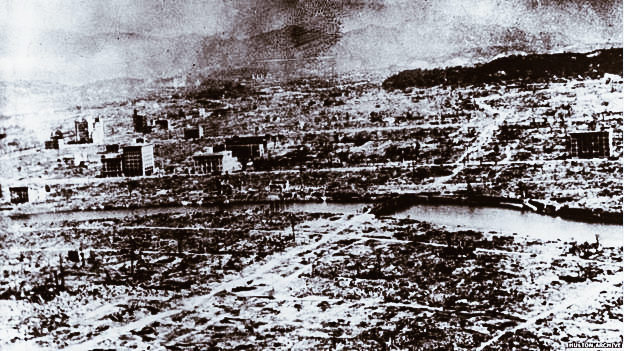
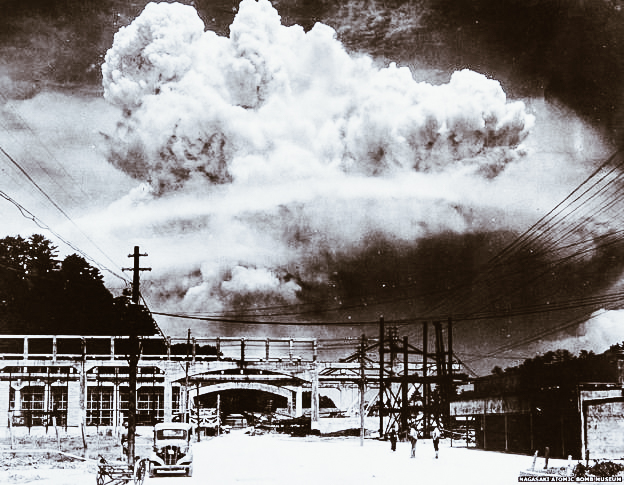
photo credits: bbc.com
Nagasaki's wounds
The symbol of the history of Christianity in Japan is the Twenty Six Martyrs Museum which commemorates the 26 martyrs killed in 1597.
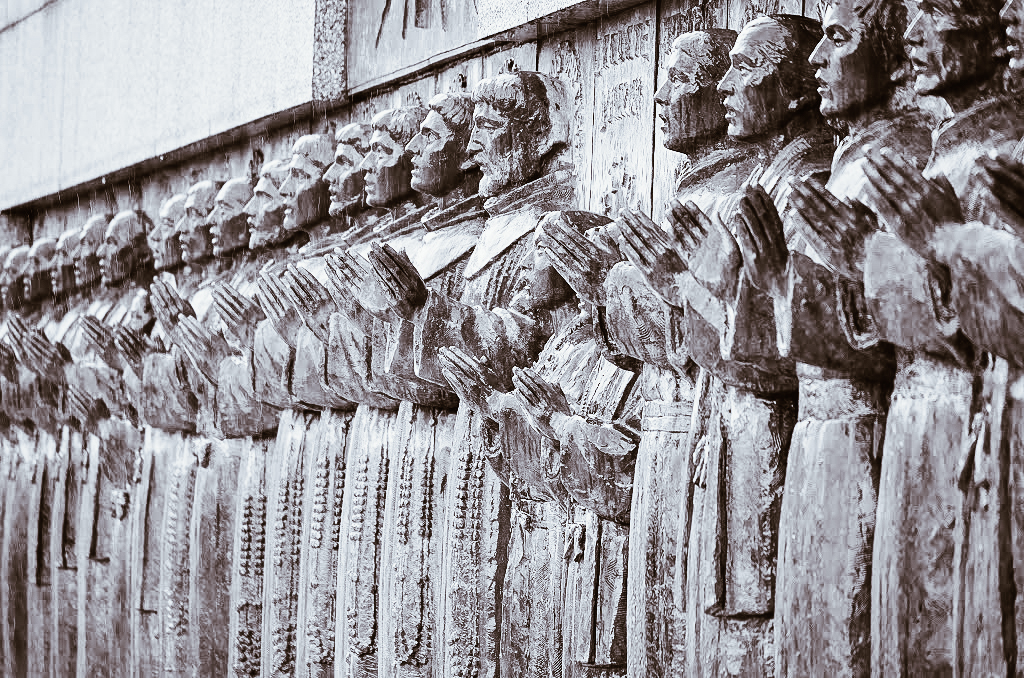
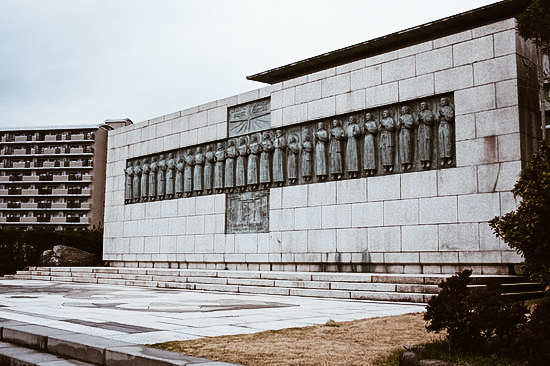
photo credits: tropki.com, tripadvisor.it
Of course, as in Hiroshima, the Nagasaki Atomic Bomb Museum is also a milestone in this journey. A memorial showing the city before and after the bombardment with the aim of pushing people to reflect on what truly means peace and denuclearization. Moreover, exactly in the place where the bomb broke out, stands the Peace Park.

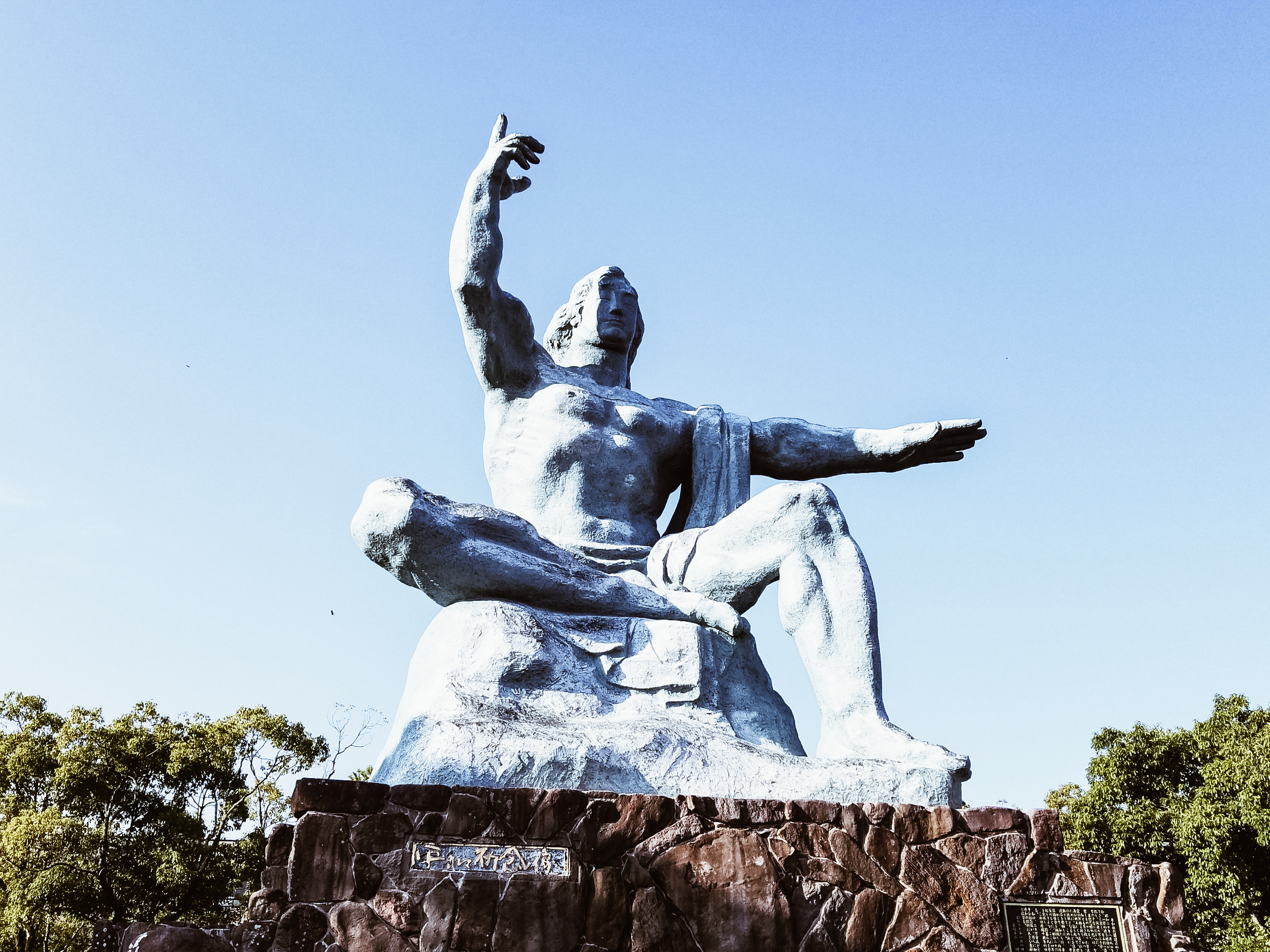
photo credits: welcomekyushu.com, wantabi.info
At 20 km from the port, there is Gunkanjima (Hashima Island, the armoured island), the smallest most populated island in the world, or so it was until the 70s. In order to accommodate as many people as possible, the island took on the appearance of a massive battleship. Later, it was completely abandoned, becoming an example of industrial archaeology that attracts ruins enthusiasts!
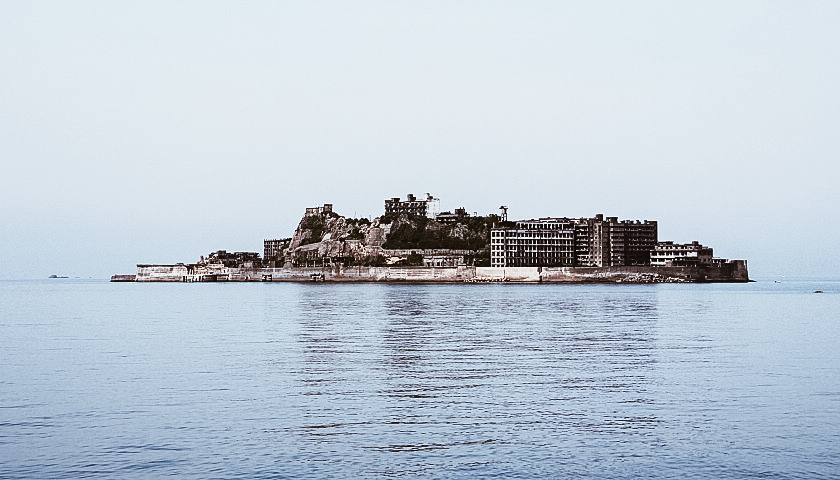
photo credits: japan-guide.com
Visit Nagasaki
If you are a fan of breathtaking city views, a must is the summit of Mount Inasa (稲佐山, Inasayama) which, with its 333 meters, is located near the centre of Nagasaki. Besides the car and the bus, you can use the cable car to fully appreciate the beauty of the surrounding nature!
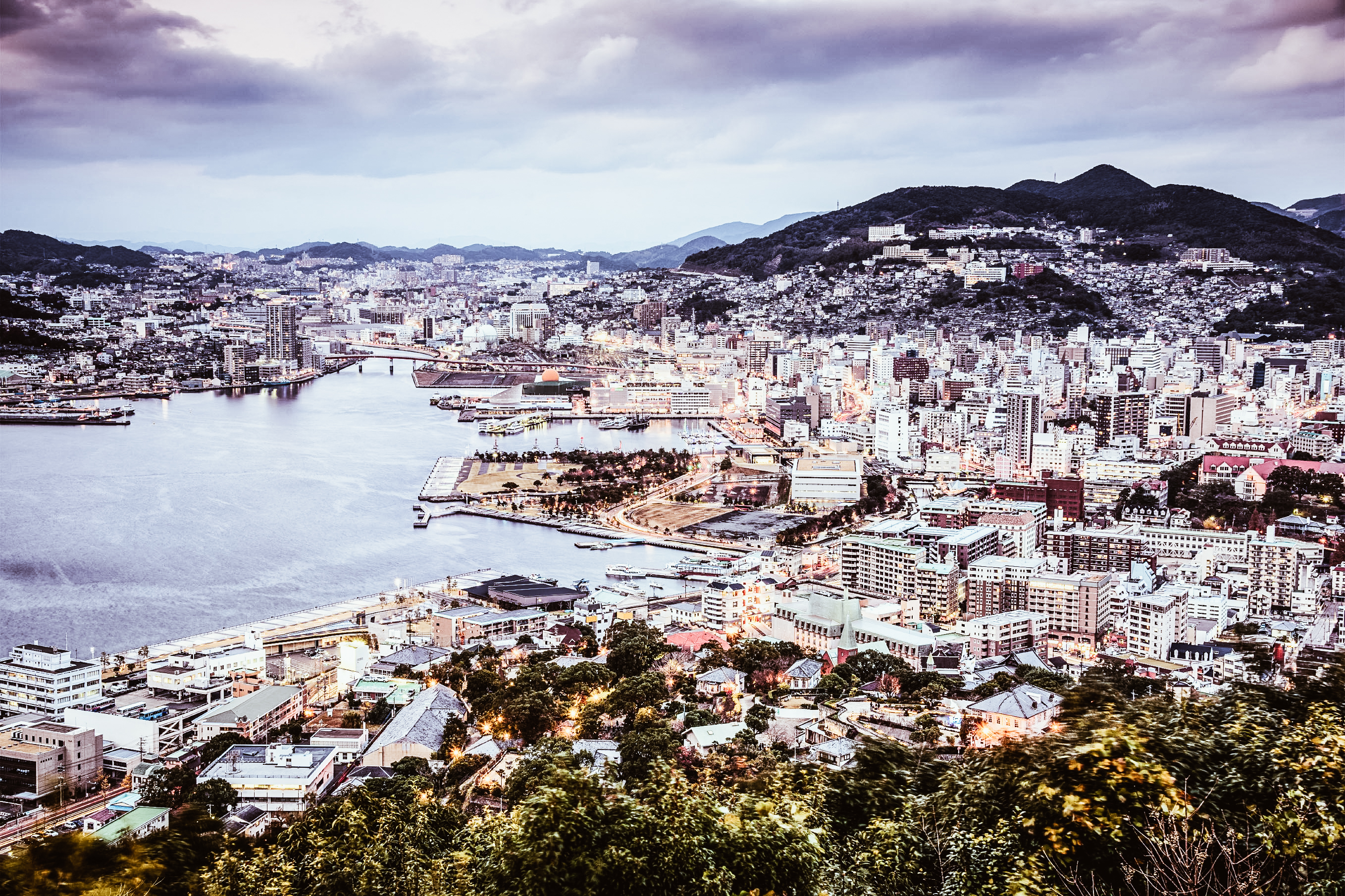
photo credits: travel.gaijinpot.com
Naturally, Japan has accustomed us to splendid corners of paradise-like gardens. In fact, in Nagasaki we find the Glover Garden. Located on the hill where Western merchants settled since 1850, it is a real museum where you can visit the buildings of the time.

photo credits: japanmeetings.org
Among the many temples, there is something that is not easy to find in Japan. We are talking about the Basilica of the Twenty-Six Holy Martyrs of Japan (日本二十六聖殉教者堂) or Ōura Church (大浦天主堂 Ōura Tenshudō). It is a Catholic church dating back to the Edo period. For many years it was the only Western-style building inscribed in Japan's National Treasury and is considered the oldest church in Japan.
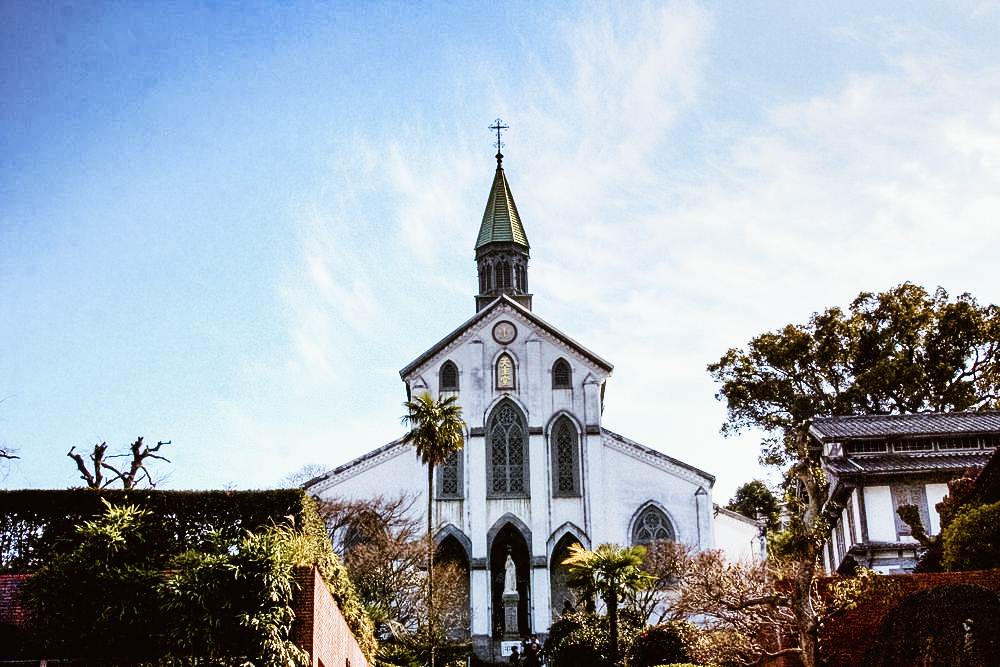
photo credits: yitubao.com
Behind the sad story that unites these two cities, there is the great strength of a Nation that has always known how to rise back up. Hiroshima and Nagasaki are historical testimonies that we wanted to remind you of and that too often are considered as distant realities, but which instead must make us reflect deeply, not to forget what happened.
Japan History: Takeda Shingen
Takeda Shingen (Takeda Harunobu December 1, 1521 - May 13, 1573), firstborn of warlord Takeda Nobutora, was born in the powerful Takeda clan. He was Shugo Daimyo (military governors) of the then province of Kai, present-day Yamanashi prefecture.
Takeda Shingen played a very important role in the battle of Un no Kuchi in 1536, he was only 15 years old. When his father designated his second son as heir, Shingen conducted a coup without bloodshed. This forced his father to retire as head of the clan. Later, Shingen began to expand his family's domains northward into the province of Shinano (present-day Nagano prefecture) and into lands adjacent to Kai.
As the undisputed leader of the Takeda clan, he began his expansionist policy starting with the Battle of Sezawa. He then continued with the sieges of Uehara, Kuwabara and Fukuyo, the battles of Ankokuji, Odaihara, Shiojiritoge, and the Kawanakajima battles series against Uesugi Kenshin.
Shingen decided to have all the warriors in the first lines of his armies wear red lacquered armor to intimidate the enemy psychologically. This idea was also later copied by the Tokugawa army clan.
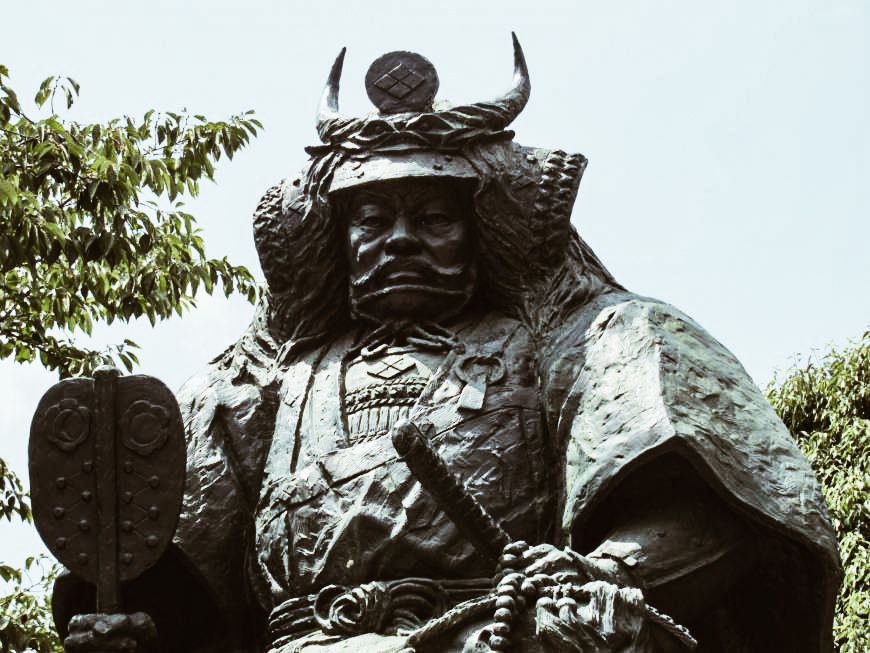
photo credits: japantimes.co.jp
The life of Takeda Shingen
In 1548 Takeda Shingen defeated Ogasawara Nagatoki in the battle of Shiojiritōge and took Fukashi in 1550. Uesugi Kenshin took the field at that time because the Takeda had now reached the borders of his province.
What began was a rivalry that became legendary and that led them to clash in the battles of Kawanakajima. These battles were generally skirmishes, in fact, none of the two daimyō wanted to discover themselves in an all-out battle.
The fiercest battle between the two was the fourth one, during which, according to legend, Uesugi Kenshin managed to break through the Takeda lines and faced Shingen. It is said that Kenshin attacked Shingen with his sword defending himself with his fan (or tessen). Both lost numerous men during the battle. In particular, Shingen lost two important generals, Yamamoto Kansuke and his younger brother Takeda Nobushige.
Takeda Shingen entered the priesthood in 1551, at which time he assumed the Buddhist name Shingen. However, taking religious vows in no way prevented his participation in worldly affairs.
After the fourth battle, Shingen discovered two plots against his life. The first by his cousin Suwa Shigemasa, who was ordered to commit seppuku. While the second, a few years later by his son Takeda Yoshinobu. The latter was exiled to the Toko temple, where he died two years later perhaps by order of his father. After this incident, Shingen appointed his fourth child, Katsuyori as successor to the leadership of the clan.
After conquering Katsurao, Wada, Takashima and Fukuda, in 1554 he returned as many victories in the sieges of Fukushima, Kannomine, Matsuo and Yoshioka.
In 1563, together with Hōjō Ujiyasu, Takeda Shingen conquered Matsuyama Castle in the province of Musashi. Subsequently it obtained the possession of Kuragano in 1565 and of the castle of Minowa. Then he moved against the Hōjō attacking Hachigata castle.
He retired successfully after Hōjō Ujiteru and Hōjō Ujikuni failed to stop him in the battle of Mimasetōge.
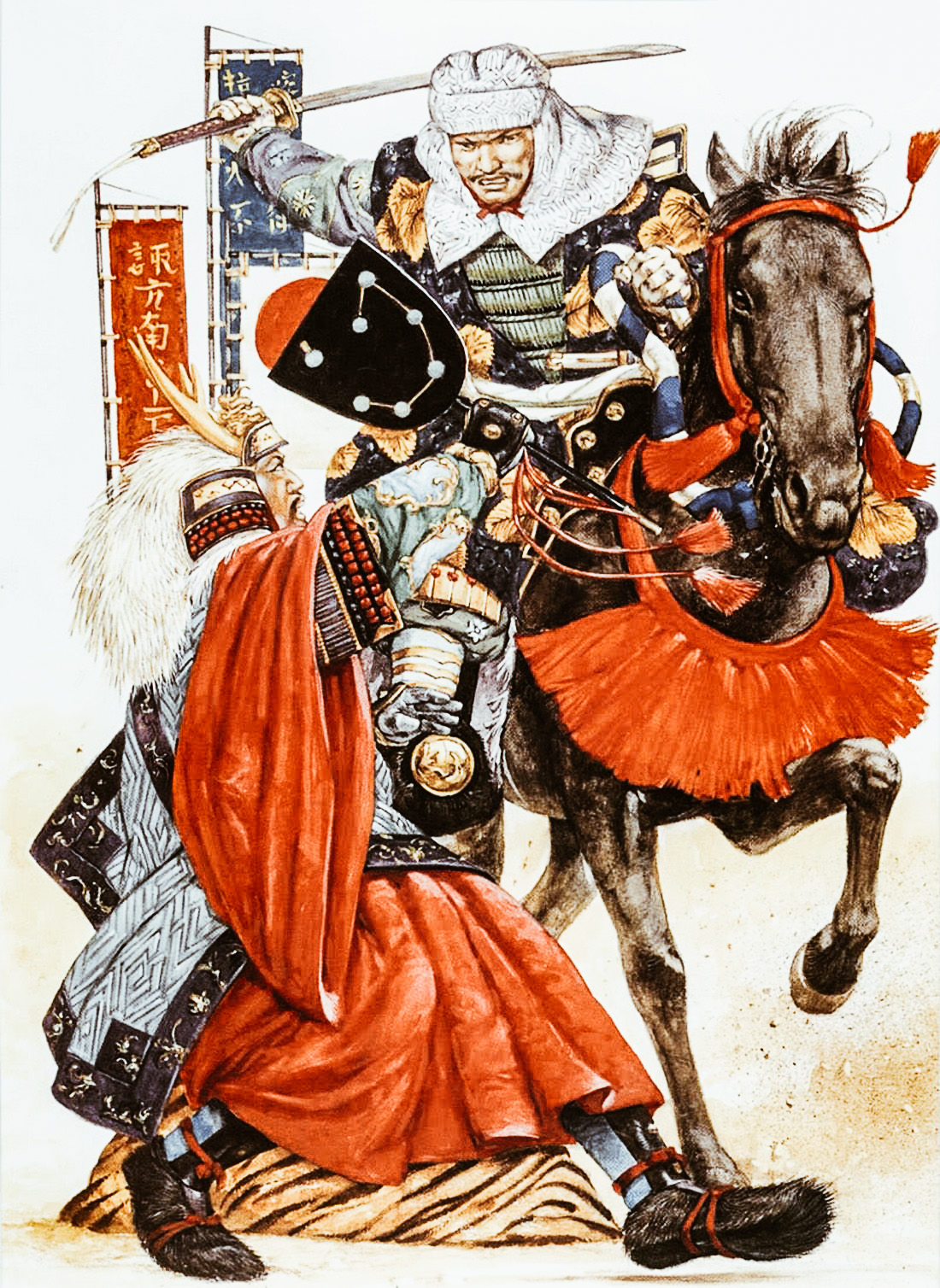
photo credits: pinimg.com
Harunobu's main ambition was the submission of Shinano. However, the resistance in that neighborhood was fierce. A number of Shinano warlords, including Murakami Yoshikiyo, Ogasawara Nagatoki, Suwa Yorishige and Kiso Yoshiyasu, made a move designed with the hope to cut off further Takeda aggressions.
The march towards the Kai borders
In April 1542 the four daimyo combined forces and marched towards the Kai border, encouraged by the news that Harunobu was strengthening his defenses and was preparing to take a stand in Fuchu. In fact, Harunobu's activities were a ploy. Far from passively waiting in Kai, Harunobu led his men and took the Shinano warriors by surprise, defeating them at Sezawa.
Encouraged by Sezawa's findings, Harunobu made a trip to Shinano focusing on the territory of the Suwa clan. He first took Uehara in a surprise attack and then moved to Suwa headquarters in Kuwahara, located 2 kilometers to the east. Suwa Yorishige had no choice but to surrender following Harunobu's promise of safe conduct. Yorishige and his brother were taken to Kai where General Takeda, Itagaki Nobutaka, organized their death. Both of them committed suicide.
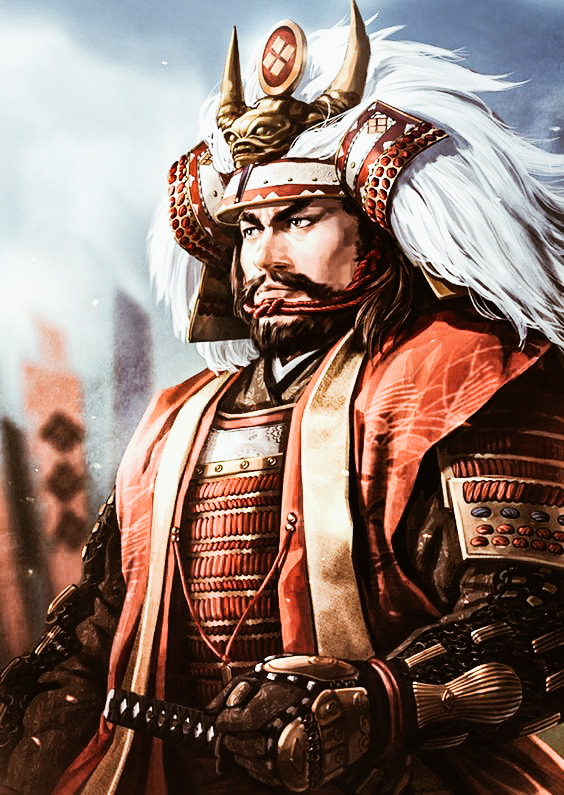
photo credits: pinterest.it
Harunobu, with the help of Yamamoto Kansuke's strategies, further expanded his territory through the defeat of Tozawa Yorichika and Takato Yoritsugu. The acquisition of the castle of Takato was of particular value. Indeed, it provided a safe stopping area in the south of Shinano, as well as a buffer against any southern aggression.
In 1544 the Takeda marched towards Suruga in support of Imagawa and confronted Hōjō Ujiyasu. No real conflict occurred following this confrontation. Harunobu was in fact forced to enter into a peace treaty between Hōjō and Imagawa.
Over the next decade, Harunobu continued to exert incessant pressure on the Shinano warlords. In 1548 Murakami Yoshikiyo, perhaps the most formidable Shinano enemy of Harunobu, moved to Ueda and defeated the Takeda clan in a bitter battle. Here a number of Chinese arquebuses were used, the first weapons of the genre ever deployed in a Japanese battle. While Uehara's defeat left two of his best generals dead, Harunobu quickly bounced back. In fact, in 1552 the Murakami and Ogasawara clans fled from Shinano to Echigo.
Takeda Shingen vs Uesugi Kenshin
In June and October 1553 the Takeda and Uesugi armies clashed near the Kawanakajima plain in northern Shinano. A clash lasted five times but only the fourth battle produced a wide-ranging race. Both sides suffered heavy losses that slowed both warlords for a few years. In particular, Shingen must have suffered from the loss of Nobushige and Yamamoto Kansuke, both of whom died in the battle.
In 1560 Shingen had discovered a plot against him led by his cousin Katanuma Nobumoto and in 1565 the one organized by his son Yoshinobu and Obu Toramasa. Two years later Yoshinbou died. Legend says that death is due either to illness or, as many believe, because Shingen had forced him to commit suicide. The event left Takeda's servants uneasy.

photo credits: wikipedia.org
In 1564, Shingen had subdued all of Shinano and turned his attention to Kōzuke, where he took a number of castles from the Uesugi clan. For the next five years, he limited himself to raids and local conquests, focusing on internal affairs.
In 1560, Shingen's greatest achievement was the Damji River Damming project. The benefit of the Fuji river project is considered one of the greatest national initiatives of the sixteenth century.
In 1568, Takeda's army was on the move again, this time south against Imagawa. The daimyo of that clan was Ujizane, the incompetent son of the late Imagawa Yoshimoto (killed in 1560 by Oda Nobunaga). Yoshinobu, son of Shingen, had married Ujizane's sister, but after her suicide in 1567, relations between the families had increased. It would appear that Shingen and Tokugawa Ieyasu had entered into an agreement under which the two would divide the remaining lands of Imagawa (Tōtōmi and Suruga). However, this agreement was never completed. Furthermore, Sagami's Hōjō did not see this shift in the balance of power. Because of this, he sent troops to challenge Shingen. In 1569 Shingen responded by invading Sagami and besieging Odawara (the capital of Hōjō). However, on the way back to Kai, the Takeda army managed to crush an attempted ambush by Mimasetoge of Hōjō.
Thus, in 1570, the lands of Takeda included Kai, Shinano, Suruga and pieces of Kozuke, Tōtōmi, and Hida. Shingen, at 49, was now more than a regional power. Takeda Shingen was in fact the most important warlord east of Mino. Moreover, he was the only one able to derail Oda Nobunaga's march to national hegemony. Only Shingen had the strategic position and the armed forces to stop it.
In 1570 the formidable Hōjō Ujiyasu died and his heir, Ujimasa, made peace with Shingen. This was an act that could have ensured Tokugawa Ieyasu final destruction. However, Shingen died in 1573 sending the plans into smoke.
The Takeda clan allies with the Oda clan
Meanwhile, the Takeda and Oda, aimed at controlling the Uesugi clan. After a failed diplomatic courtship, they started a war of words with the shogun Ashikaga Yoshiaki.
Shingen intensified the pressure against Tokugawa and in 1572 launched an attack on Tōtōmi which led to the capture of Futamata. The following January, Shingen returned to the province and attracted Tokugawa Ieyasu at the Battle of Mikatagahara. Conducted on January 6 north of Hamamatsu, it ended with an almost complete defeat for Ieyasu.
Although they were often presented as initial moves in a march on Kyoto, Shingen's intentions were undoubtedly more conservative. Probably, Takeda Shingen aimed to test the answers of both Ieyasu and Nobunaga and, if possible, inflict a defeat on the two. In any case, within a few days of winning the battle, he received the news that Asakura Yoshikage had chosen not to oppose to Nobunaga. Shingen was sorry and could count on Yoshikage to maintain the tension on Nobunaga. This may have played a part in his decision to return to Kai, thus granting a truce to the bloody Tokugawa.
The figure of Takeda Shingen
Shingen was a complicated figure, sometimes absolutely cruel. At the beginning of his life, he had forced Suwa Yorishige to commit suicide (or murdered him) after the two warlords had signed a peace treaty. He then took Suwa's daughter as a lover, ignoring the fact that she was technically his own niece.
Apparently, Shingen created Shingen Tsuba, (sword guard) also known as Takeda Tsuba. The story goes that while waiting for a battle to begin, Shingen wrapped the brass wire around a large iron sukashi to keep himself focused and able to think until the battle began. Because of this, many of his vassals followed Shingen's leadership throughout the Edo period.
He is also credited with inventing the toilet drain, bathroom hygiene, apparently, was important to Shingen. He also built the vast dams known as Shingen Zutsumi along the Kamanashi segments of the Fuji river. These walls prevented flooding and were one of the largest and most ambitious national public works initiatives of the sixteenth century.
The well-considered laws of Shingen were not considered particularly severe. He suspended corporal punishment for most minor crimes. In fact, he adopted a system of financial fines, which earned him the respect and praise of the peasants and citizens of the province of Kai.
It is interesting to note that Shingen also had two large iron cauldrons in which to boil criminals still alive. Tokugawa Ieyasu, thinking that the punishment was excessively cruel, destroyed the cauldrons years later.
His economic reform was also innovative at the time. Indeed, Takeda Shingen taxed most of its subjects uniformly and allowed them the option of payments in gold or rice.
Takeda Shingen had planned on the districts of Mikawa and Owari (now both Aichi Prefecture). In 1571 he entered the territories of the Okudaira clan (later Tokugawa) and captured the castle of Noda.
In 1573, he invaded Mikawa and again attacked the castle of Noda. However, this time, the fortifications of the castle had been strengthened, allowing it to stand for several weeks.

photo credits: wikimedia.org
The death
On May 13, 1573, towards the end of the siege, just before the defenders of Noda Castle capitulated, Takeda Shingen was shot by a marksman. Shingen died during the escape.
The death of Takeda Shingen at the age of 49 remained a secret. The remains of the gun that was used to shoot Shingen are kept in the Shitagahara Museum in Nagashino, Aichi Prefecture. His son and successor, Takeda Katsuyori, was defeated by Oda and Tokugawa in the early 1580s, thus ending the power of the Takeda family.
Instead of a poem of death, he left the following words, borrowed from Zen literature: "It is largely left to its natural bodily perfection, and has no special need to resort to artificial coloring and powder to look beautiful. "
Yuki-Onna: the mysterious incarnation of the Japanese winter
In the endless world of yokai (supernatural creatures of the Japanese tradition), the figure of Yuki-Onna (雪女) stands out. Legendary snow woman, with her icy and lethal charm, embodies the terrible beauty of winter in the mountains of Japan.
Despite being known by different names and stories in the various prefectures, this character is renowned above all in the coldest and most inaccessible areas of the archipelago.

The Yuki-Onna is described as a beautiful woman with white skin, which appears on mountain trails and in snowstorms. She is dressed in a light white kimono or naked and covered only by very long hair, black or white depending on the legends. Ethereal and floating apparition in the snowy landscape on which it leaves no footprints, it can suddenly disappear turning into a cloud of fog or very fine snow.
Yuki-Onna: the Origins
The origin of this figure, like other yokai, is lost in the most ancient times. The first written trace of its history is found in the Sōgi Shokoku Monogatari, dating back to the Muromachi period (1333-1573). Here the monk Sogi describes the encounter with a woman of extraordinary beauty during his stay in the province of Echigo (current prefecture of Niigata). This mysterious woman was dressed in white, tall and with a very pale complexion and long white hair. From a young appearance, she mysteriously appeared one morning in the frozen garden of the monk. However, it disappeared just as mysteriously under the incredulous gaze of man.
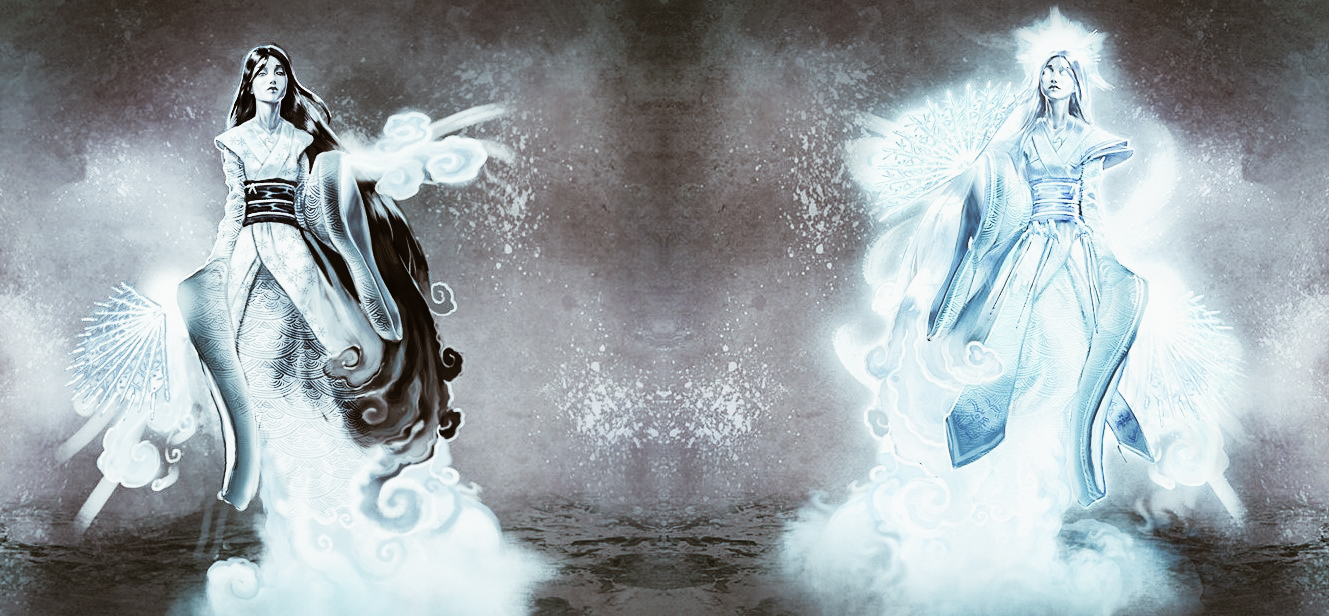
photo credits: smitefire.com
The two faces of winter
Like the winter that can manifest itself with a dazzling and serene splendor or with a cruel and lethal force, so is the Yuki-Onna. Sometimes it appears as a ruthless predator that attracts lost travelers into the storm to feed on them with their life energy. At other times it appears as a benevolent presence or even in its turn seduced by human charm.
In the most ancient stories, the monstrous and destructive aspect prevails. In fact, in these stories, parents who have lost their children in the mountains are approached by a woman. She asks them to pick up a child she can't bring herself. The unwary who accept this invitation are destined to freeze to death, overwhelmed by the fatigue of carrying a heavier burden at every step.
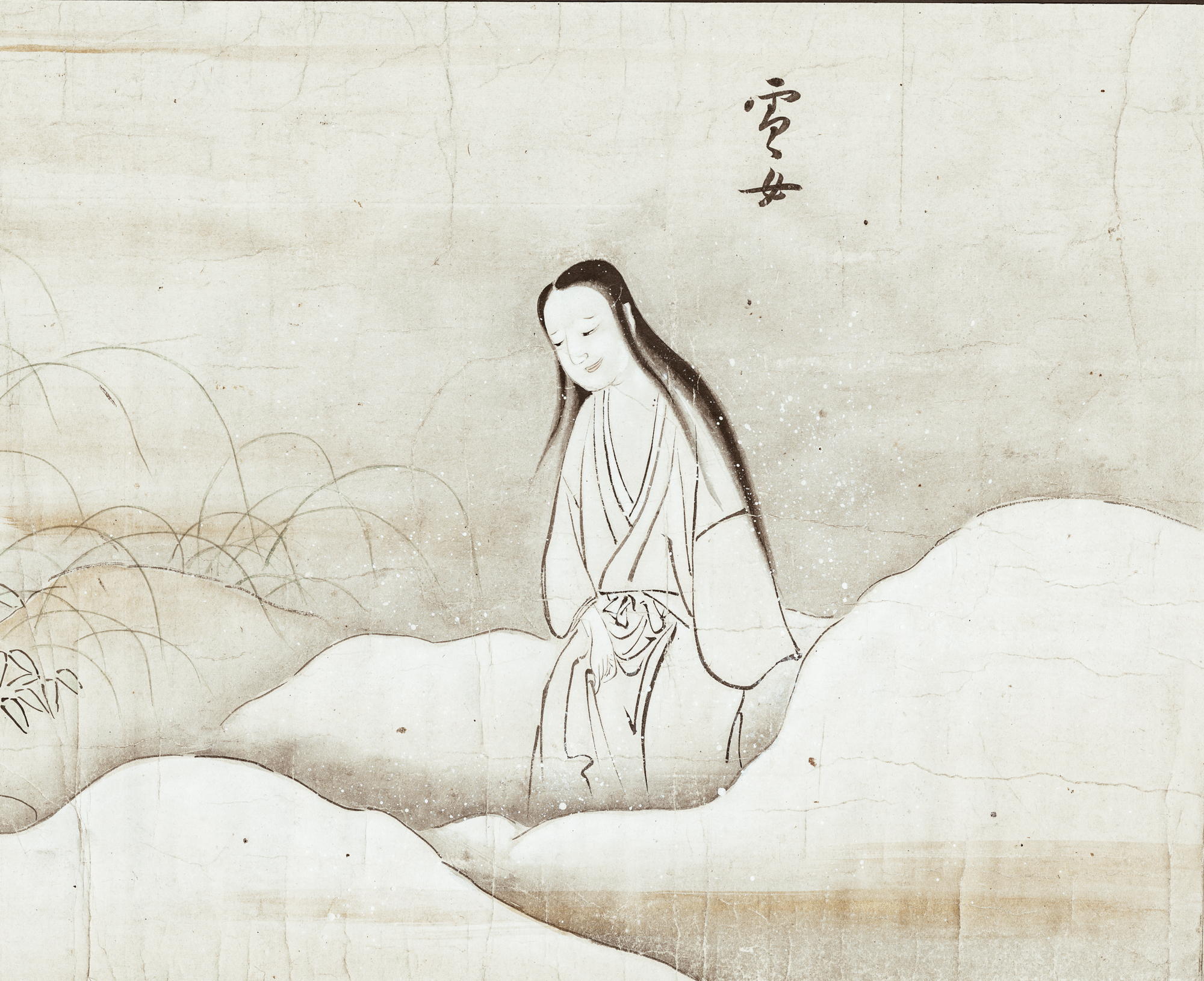
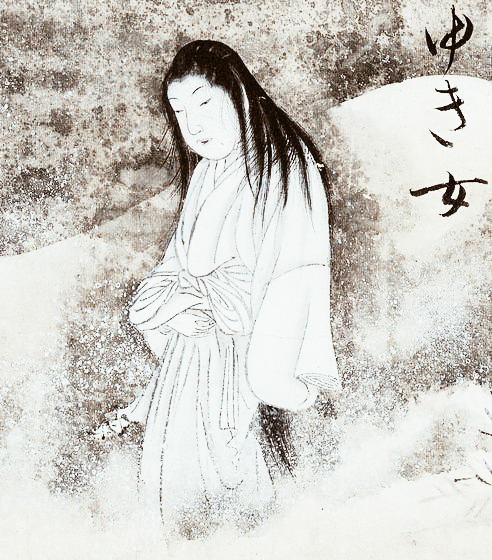
photo credits: wikipedia.org
Or in the stories, the Yuki-Onna seduces men subjugated by its otherworldly charm. They end up succumbing to his mortal kiss, able to drain their life force and freeze their hearts. Or again in dramatic stories, in which Yuki-Onna does not simply wait for the passage of bewildered travelers. Here, in fact, it enters the houses forcefully, opening doors and windows in the form of violent snowstorms, killing the unfortunate inhabitants.
In the West, we know a more romantic aspect of this reading. This is mostly thanks to the work of Patrick Lafcadio Hearn, a Ireland-born journalist and writer from Japan, also known as Koizumi Yakumo (小泉八雲).
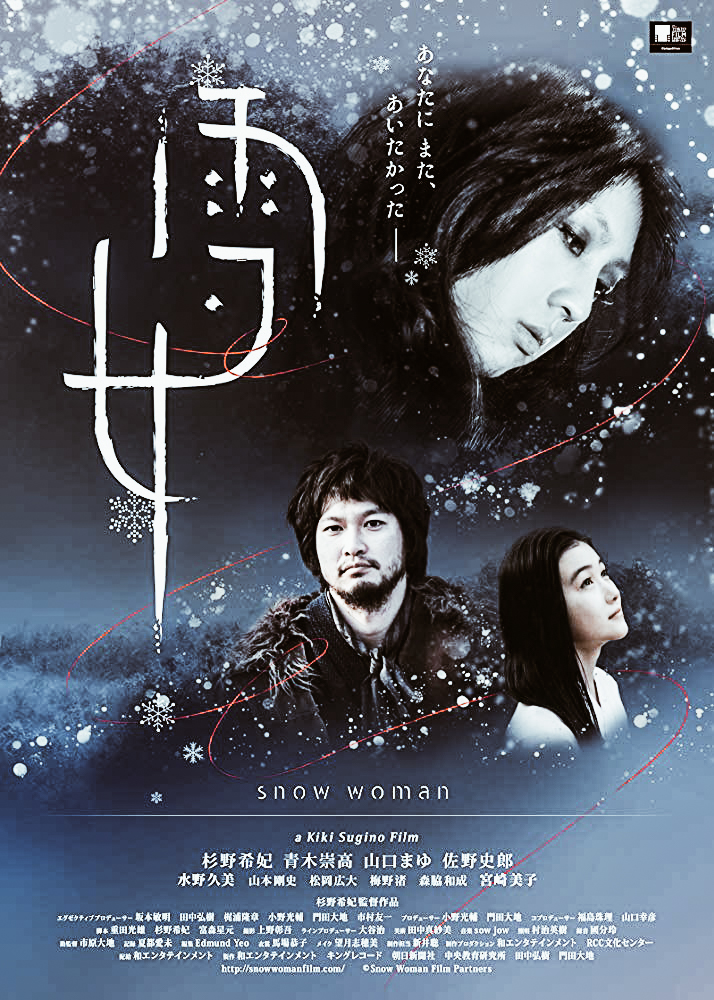
photo credits: letterboxd.com
The Lafcadio version
"Kwaidan: Stories and Studies of Strange Things" is a 1904 work containing a collection of popular beliefs and also an interpretation of the culture and customs of Japan. Here the legend narrated by Hearn speaks of two woodcutters, Elder Mosaku and his young apprentice Minokichi, who return home after a day's work on a cold evening. The two characters surprised by a violent snowstorm find shelter in a hut near a river. Afterward, the two men lay on the floor of the hut and, overcome by fatigue, they fall asleep. During the night Minokichi is awakened by an icy wind, which seems to have opened the door and windows of the hut. Still confused by sleep and believing he is dreaming, he sees a woman dressed in white and with long hair, bending over Mosaku, intent on breathing a cold mist like breath over him.
When the woman turns to Minokichi, the young man remains enchanted by her incredible beauty. However, he cannot sustain that look that inspires an unspeakable terror. Softened by the youth and the attractiveness of the boy, the woman decides to spare his life on condition that he never reveals to anyone the existence of such a creature. If he ever spoke to any of those events, his death would be certain.
The following morning a boatman, owner of the hut, finds in his interior the now frozen body of the elderly Mosaku, but manages to rescue Minokichi, now semi-frozen to safety.
A year later...
Having overcome the terror and exhaustion of that terrible night, the young man marries a beautiful young woman named O-Yuki. Suddenly appearing in his village she was immediately well-liked by everyone for her charm and her gentle manner. For many years the two live a happy marriage, blessed by the girl's inexplicable eternal youth, whose beauty seems to endure unchanged over time despite the birth of ten children.
Until one-day Minokichi, forgetting the promise he made, recklessly tells his wife of a supernatural creature he met many years before and that somehow seems to remind him of his charming bride. To his immense surprise, O-Yuki, suddenly transfigured by anger, reveals herself to be the woman he met that night. After having reproached her husband for not having been able to keep the promise of secrecy made so many years before, she decides to spare his life for the sake of their children. So, after warning him to take good care of them, she disappears forever.
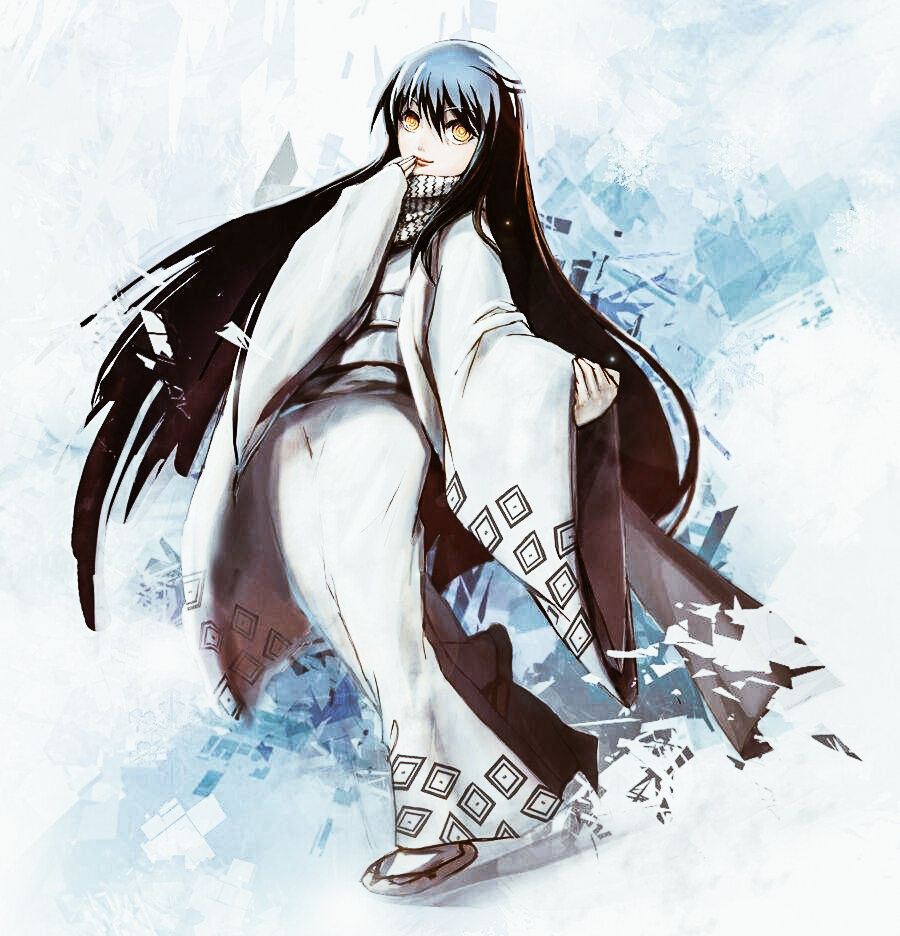
photo credits: aminoapps.com
Yuki-Onna in the contemporary age
Like the bride of Minokichi, the legend of Yuki-Onna, cruel and romantic at the same time, seems to preserve its charm over the centuries.
In fact, in contemporary times it has inspired numerous films. We remember in fact Kwaidan (怪怪) of 1965, directed by Masaki Kobayashi, winner of the special prize of the jury at the Cannes Festival. Kwaidan was also in the running for the Academy Awards with a nomination for Best Foreign Language Film.
The success of this film was followed, in 1968, by Kaidan Yukijoro by Tokuzô Tanaka, until 2016 with Yuki-Onna, directed and performed by Kiki Sugino.
The beautiful and lethal snow woman, in her innumerable variations, then appears as a protagonist or leading figure in a vast range of video games, anime and manga. Nurarihyon no Mago or Ranma ½, just to name a few. However, its timeless charm will continue to enchant us for a long time, with its eternal, candid winter.
Tanabata, the legend and modern times
Tanabata: on the seventh day of the seventh lunar month we celebrate one of the five gosekku (五節), the most important festivals of the year. This is also one of my favorite parties because it is extremely romantic.
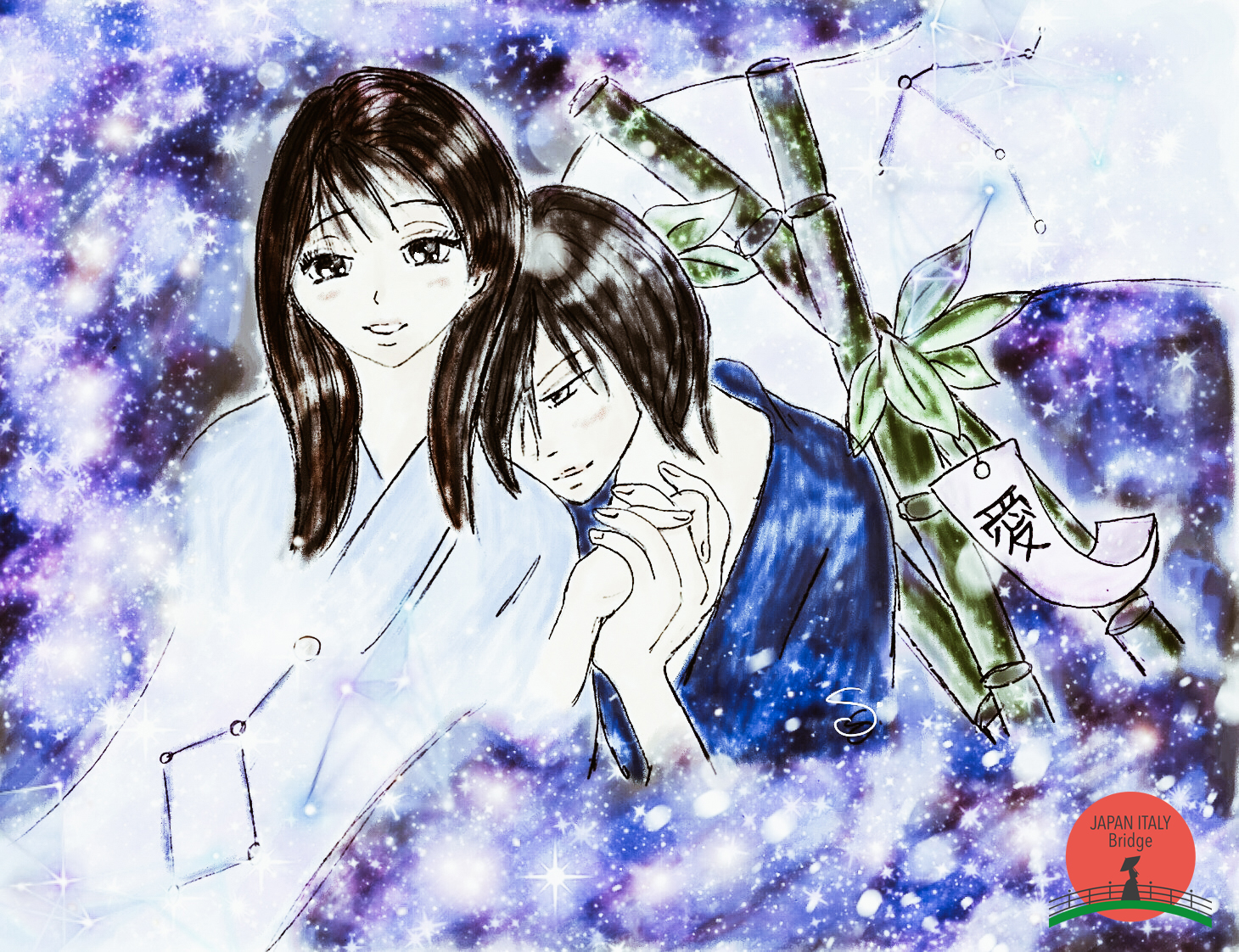
The Seventh Night
The legend tells of Princess Orihime (the star Vega), devoted daughter of Tentei (the King of the sky) who spent her day weaving on the shores of the celestial river Amanogawa (the Milky Way). However, her heart was sad because she had not yet known love. Then Tentei introduced her to Hikoboshi (the Altair star), a young herder of the heavenly planes who lived across the river. The love between the two exploded immediately, but the passion distracted them from their duties by unleashing the wrath of Tentei.
He divided them by returning his daughter to the opposite bank of the river. Orihime, destroyed by pain, wept a thousand tears. Tentei, struck by his daughter's great love, allowed the two lovers to meet on the seventh night of the seventh month only if they worked diligently throughout the year. The sky, in this special night, must be clear, otherwise crossing the silvery river would be impossible. In fact, if it rained it would swell and the vigor of its waters would prevent the flock of magpies from creating a bridge with their wings to allow the two lovers to hug again.
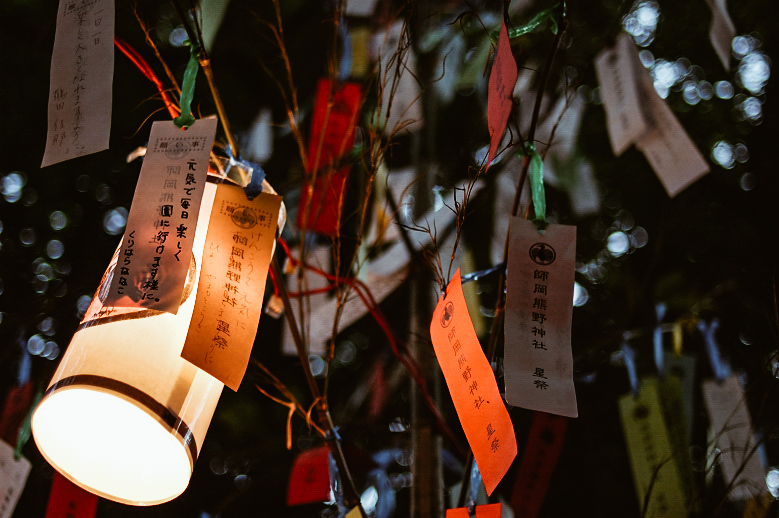
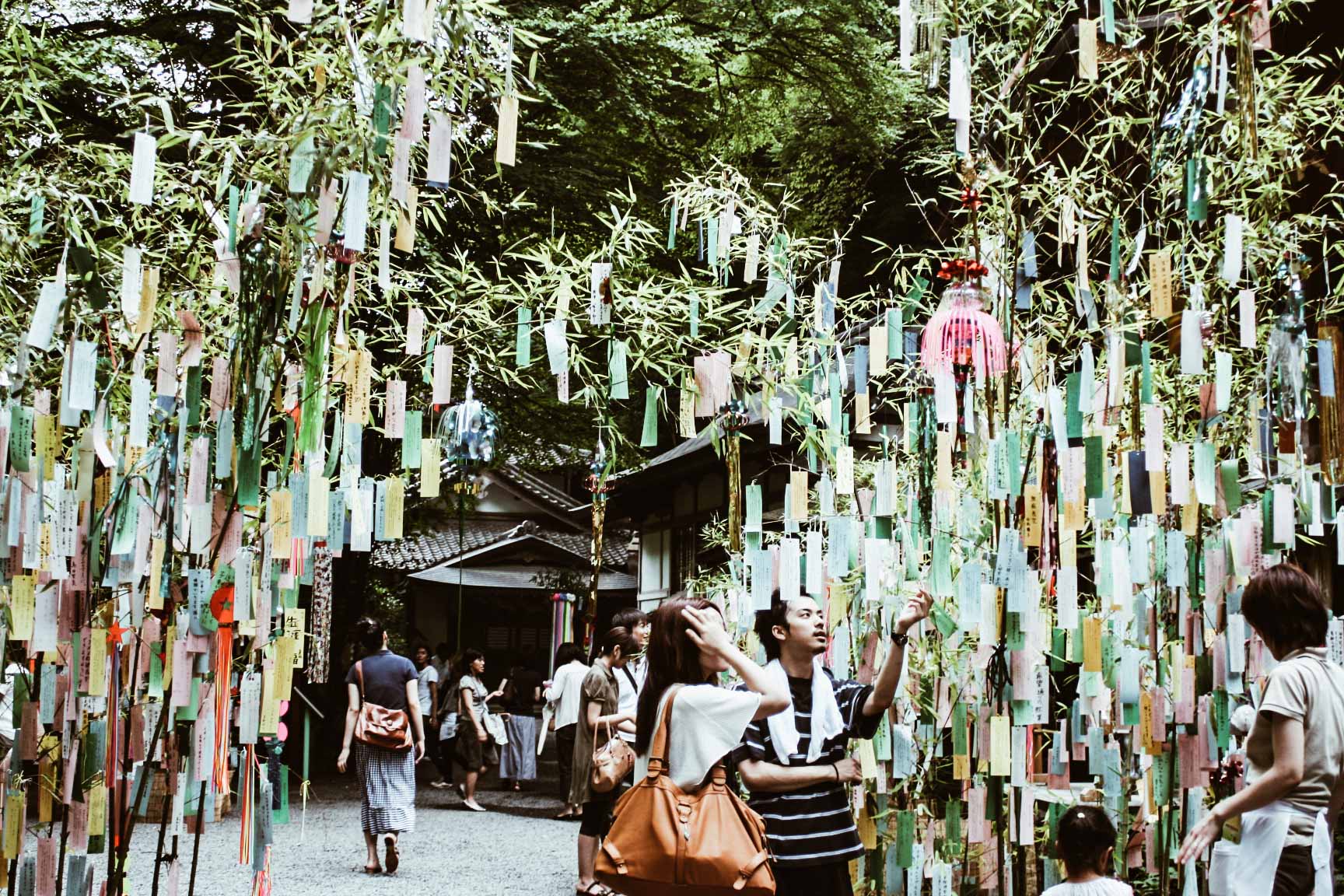
From Shichiseki to Tanabata and the customs of the festival
Tanabata was not the original name of this holiday. In ancient times it was known as Shichiseki, deriving from the reading of the Chinese kanji, from which it originates. In fact, the festival was imported from China by Empress Koken in the Kyoko Imperial Palace in the Heian period. It then spread throughout Japan in the Edo Period and has since become one of the most popular festivals.
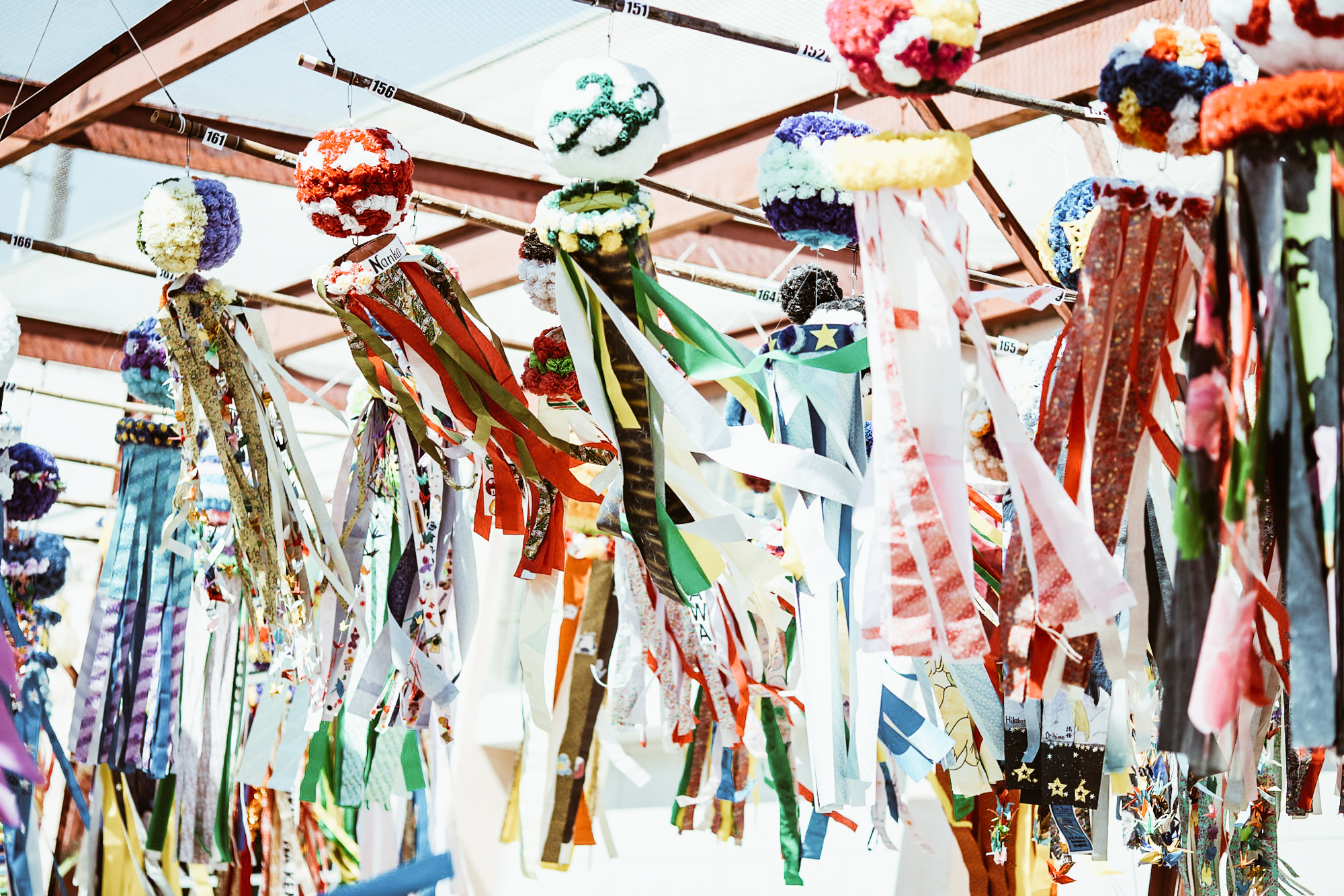

The decorations of the Tanabata
Between July 6 and August 8, according to the region, the streets are filled with zen-washi (paper lanterns) and people wear yukata (浴衣). The latter is a very informal kimono with wide sleeves and flat seams, made of cotton, without lining and therefore suitable for the summer. But the tanzaku (短冊) are the real protagonists of this enchanted night. Strips of colored paper that symbolize the silk threads woven by Orihime and on which prayers or wishes are written. Later these are tied to bamboo branches, considered the main symbol of the Tanabata. In this way, the wind, blowing through the leaves, brings with it the desires and realizes them!
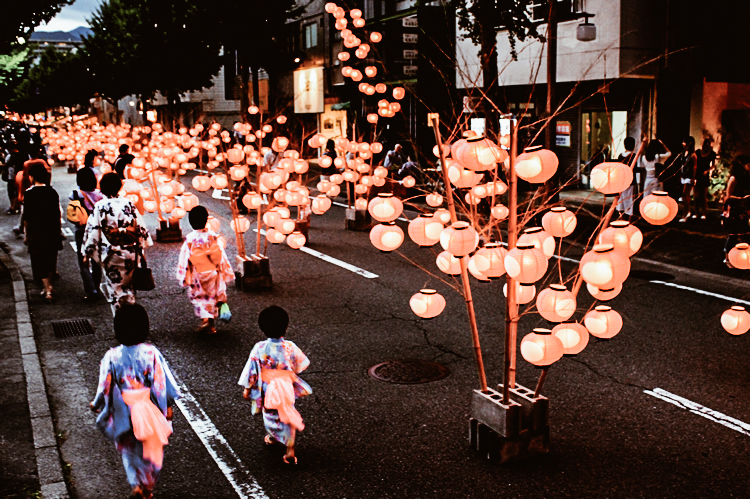
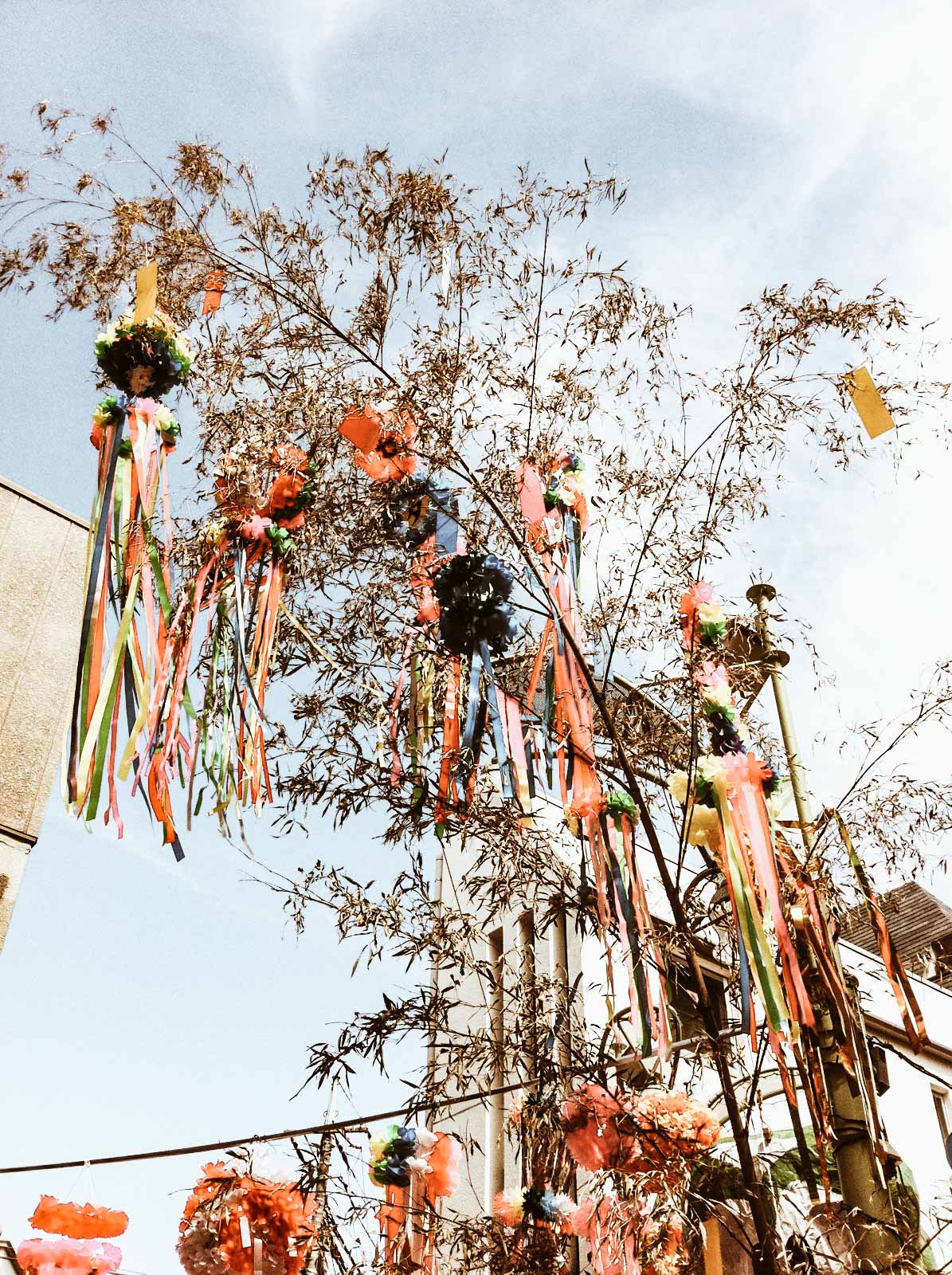
photo credits: savvytokyo.com, Hiroshi
As many auspicious decorations appear in the parades during the matsuri. There are Kamigorono (special paper kimonos) that protect against illness and accidents. We can also find toami, fishing nets whose exposure would bring good luck in fishing and in crops. Not to mention the fukinagashi, colored stripes like the fabric that Orihime wove. We then continue with the beautiful orizuru (origami) especially in the shape of a crane, bringing health, protection and long life to families. The kinchaku, small bags that bring good business and wealth. We also have the famous kusudama, oval-shaped ornaments composed of a series of origami sewn and glued together. Then we come to the kuzukagos, garbage bags that symbolize "cleanliness" (understood as purity) and prosperity.
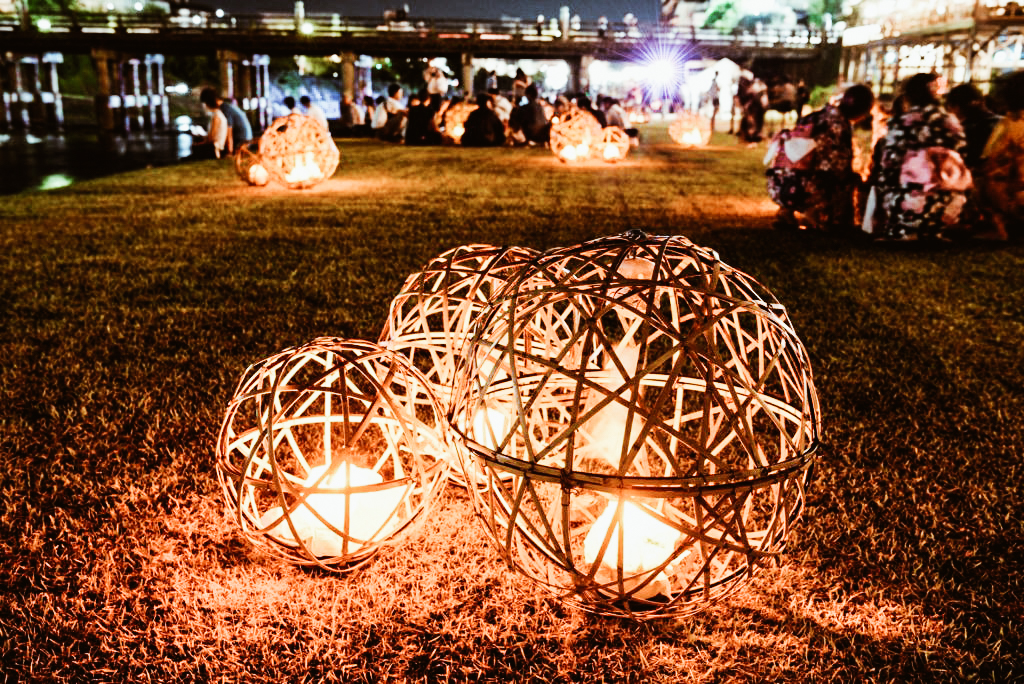
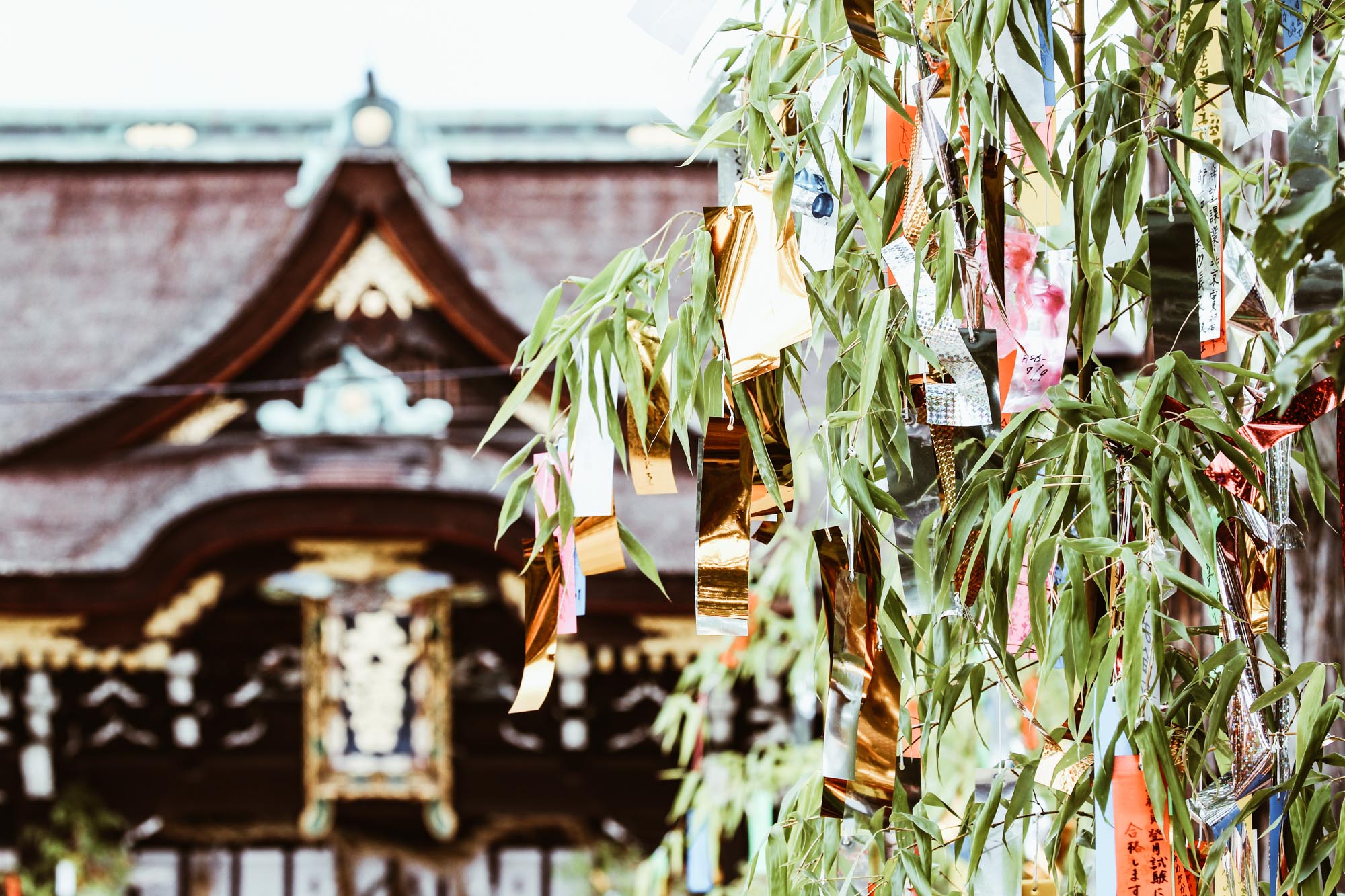
photo credits: savvytokyo.com, Naomi Nakagawa
To each region its date
As we said, the date of the Tanabata varies according to the region. In the Kanto region, The Tanabata of Hiratsuka, in Kanagawa prefecture, takes place between 4 and 6 July. In the region of Chūbu in Ichinomiya, in the Aichi prefecture, it is celebrated between 24 and 27 July. finally, in the region of Tōhoku, in Sendai, in the prefecture of Miyagi, it takes place between 6 and 8 August.
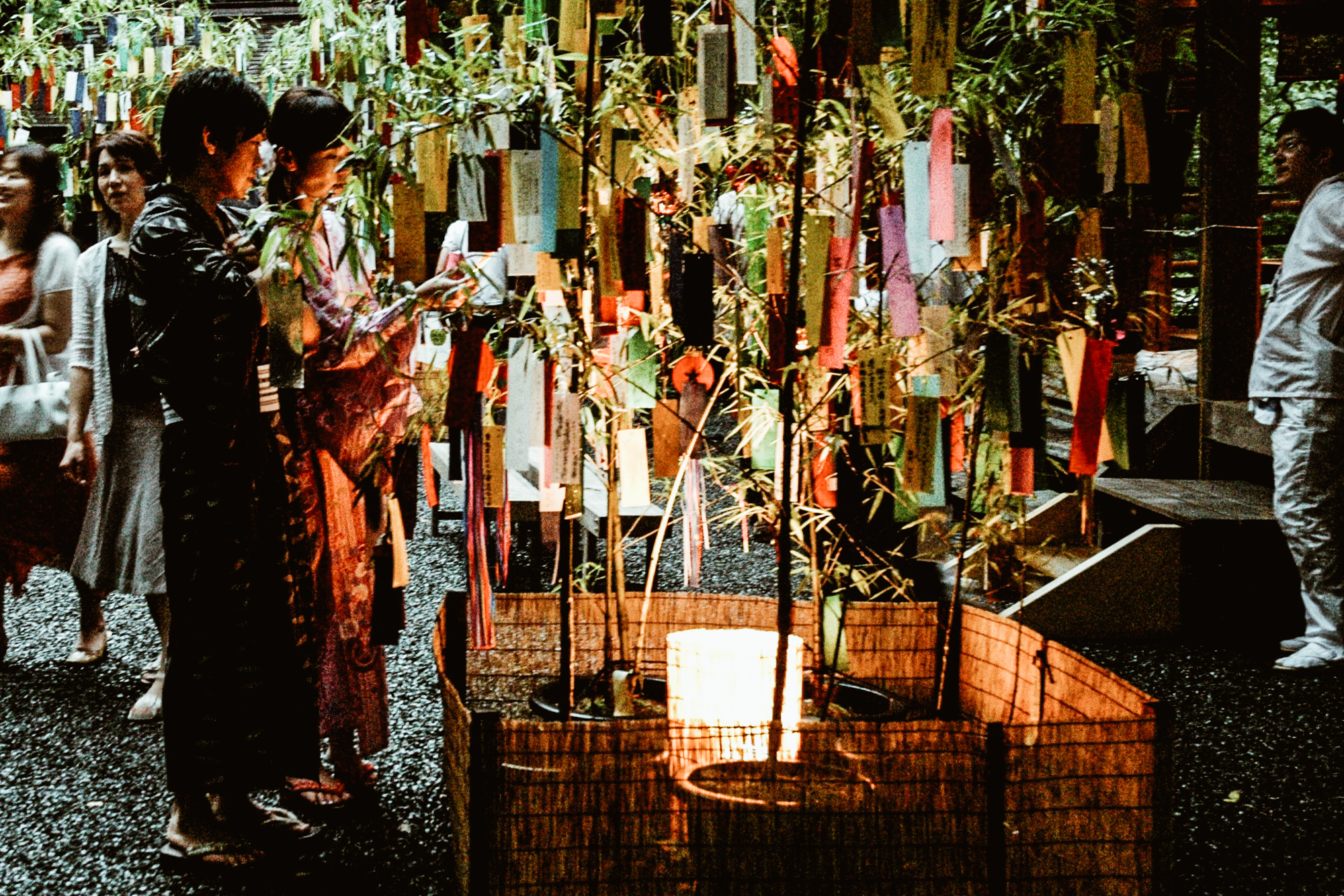
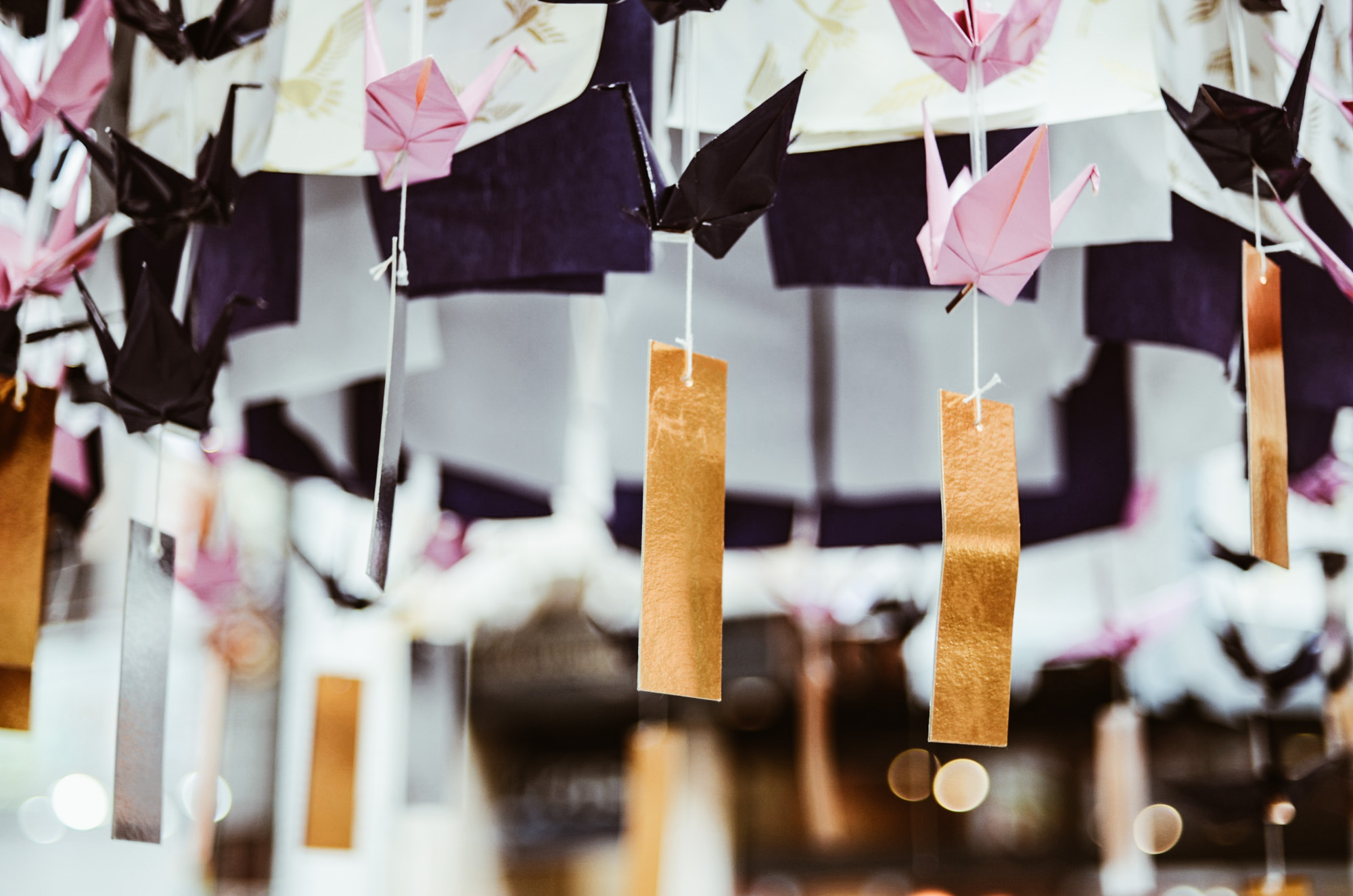
photo credits: japancheapo.com, EriTes Photo
Even if love is a feeling that always deserves to prevail, during this time of the year the idea of raising one's eyes to the sky and desiring with all one's heart something with the hope that it will come true, is always exciting. Each Tanzaku is special and it is wonderful to read people's dreams and wish them to be heard. This, in fact, is one of the many moments of altruism that can only be shared in Japan.
And you? What dream do you keep in your heart? Whatever it is, find the way to come true! And if you are around Milan, we recommend you to come and celebrate the Tanabata from TENOHA Milan. Ready to hang your tanzaku? We have already done it!
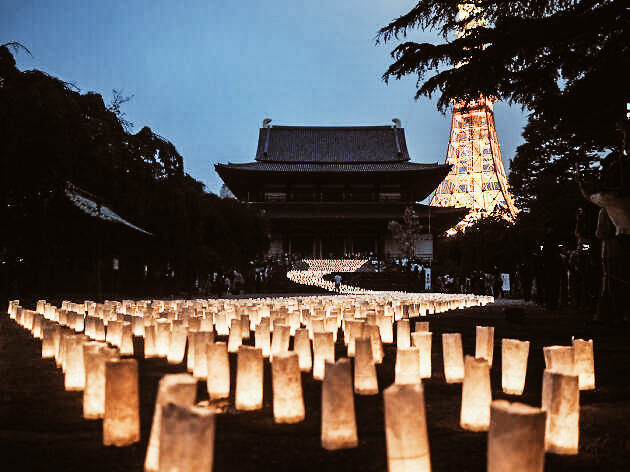
photo credits: timeout.com
Hakata Gion Yamakasa Matsuri
Every festival in Japan is overly attractive, especially the Hakata Gion Yamakasa Matsuri. Traditions so different and distant from ours that they deserve to be lived at least once. Colors, vivacity, and spirituality are mixed in a vortex of emotions that only the Rising Sun is able to offer.
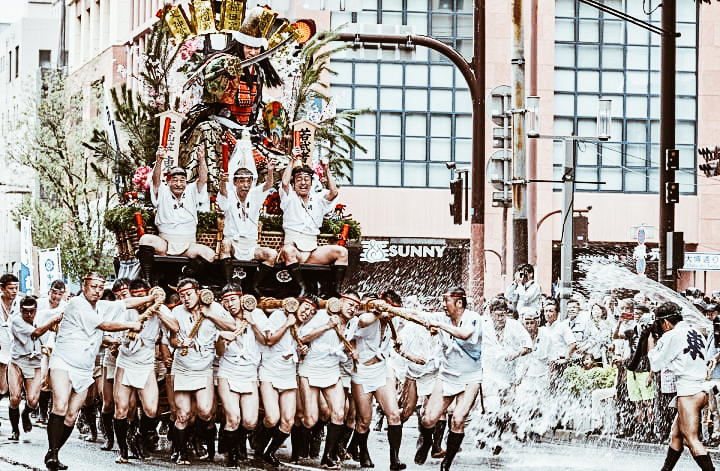
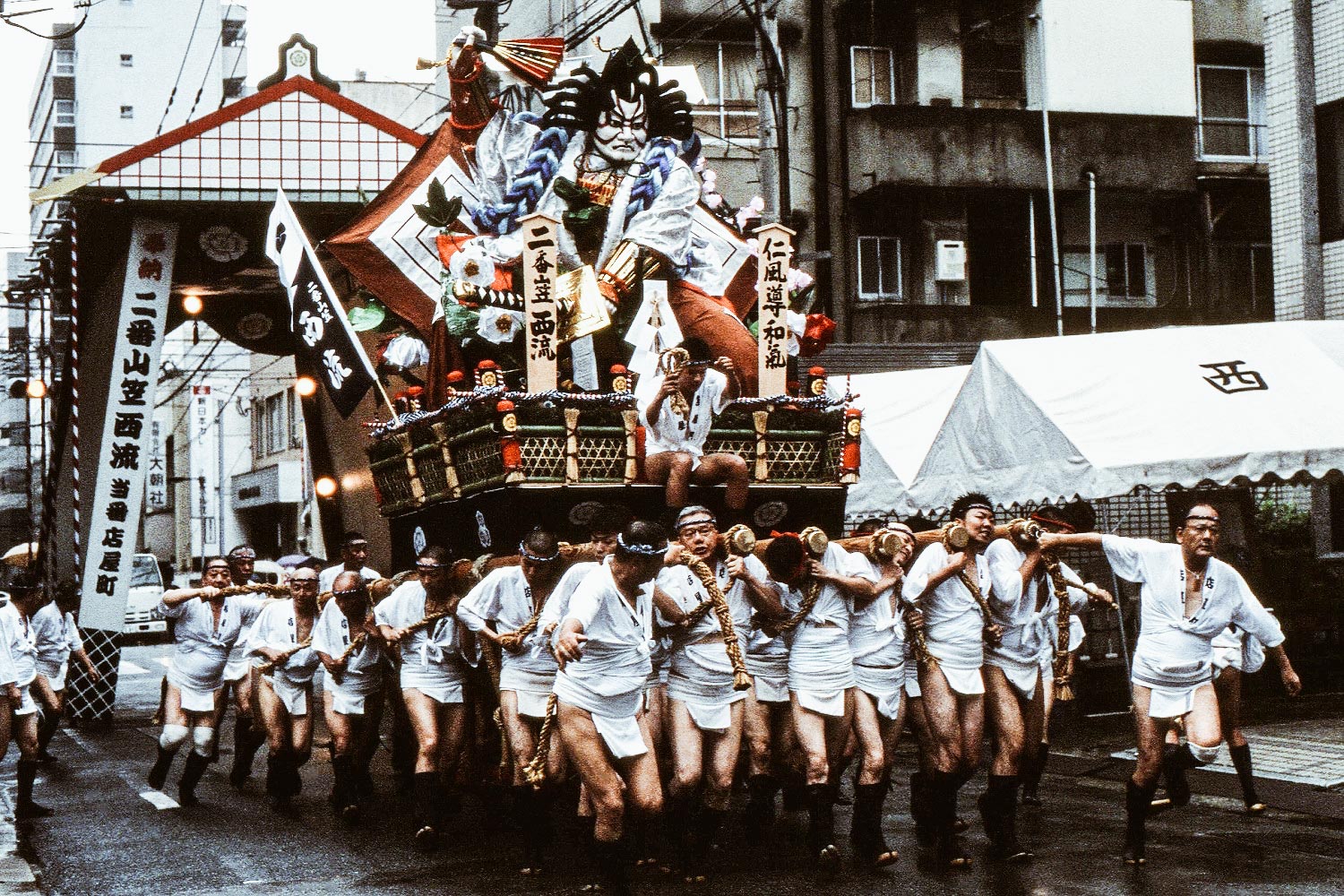
photo credits: matcha-jp.com, gaijinpot.com
The intangible cultural heritage of sacred origins
For more than 700 years, Hakata Gion Yamakasa has been celebrated in the Hakata (Fukuoka) district from 1 to 15 July. Designated as "intangible cultural heritage" by the Cultural Affairs Agency, this festival has its origins in the 13th century when a plague epidemic struck the city. The population turned to the Buddhist monk Shoichi Kokusgu to pray for the plague to end. The monk was let up on a platform and was transported throughout the city by sprinkling the streets with sacred water. At the end of the tour, the platform was thrown away and the plague disappeared completely.

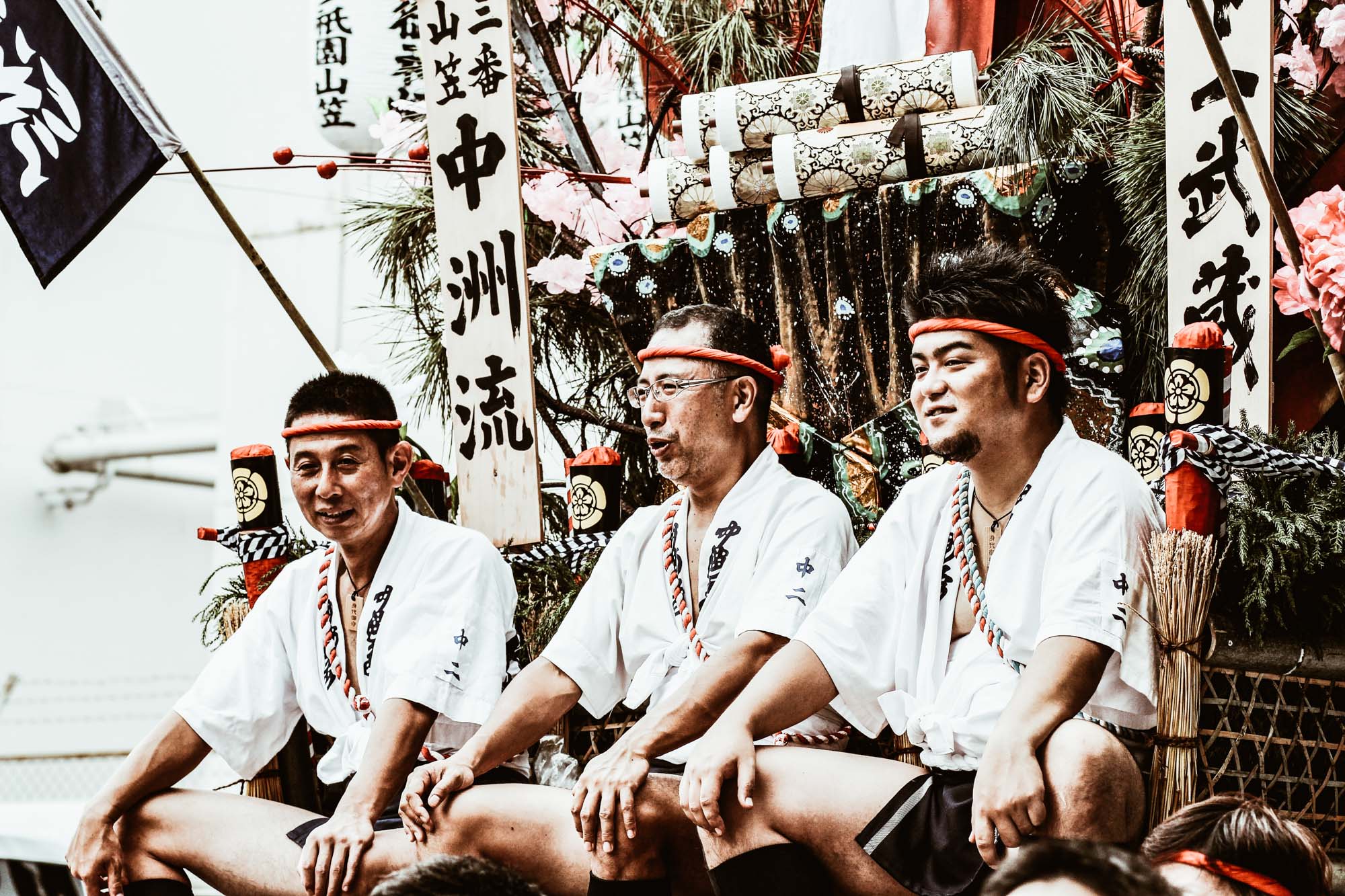
photo credits: Pascal, otsukarekun
Hakata Gion Yamakasa Matsuri: The unmissable demonstration of strength
In the period in which the festival takes place, the frenzy pervades the streets of Hakata discrict. In fact, more than one million people are preparing to attend the celebrations consisting of a chariot race!
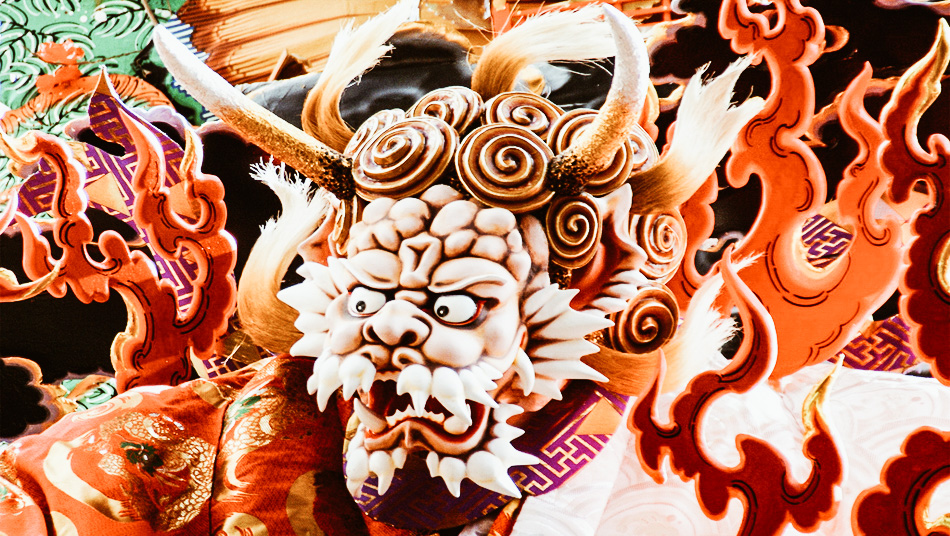
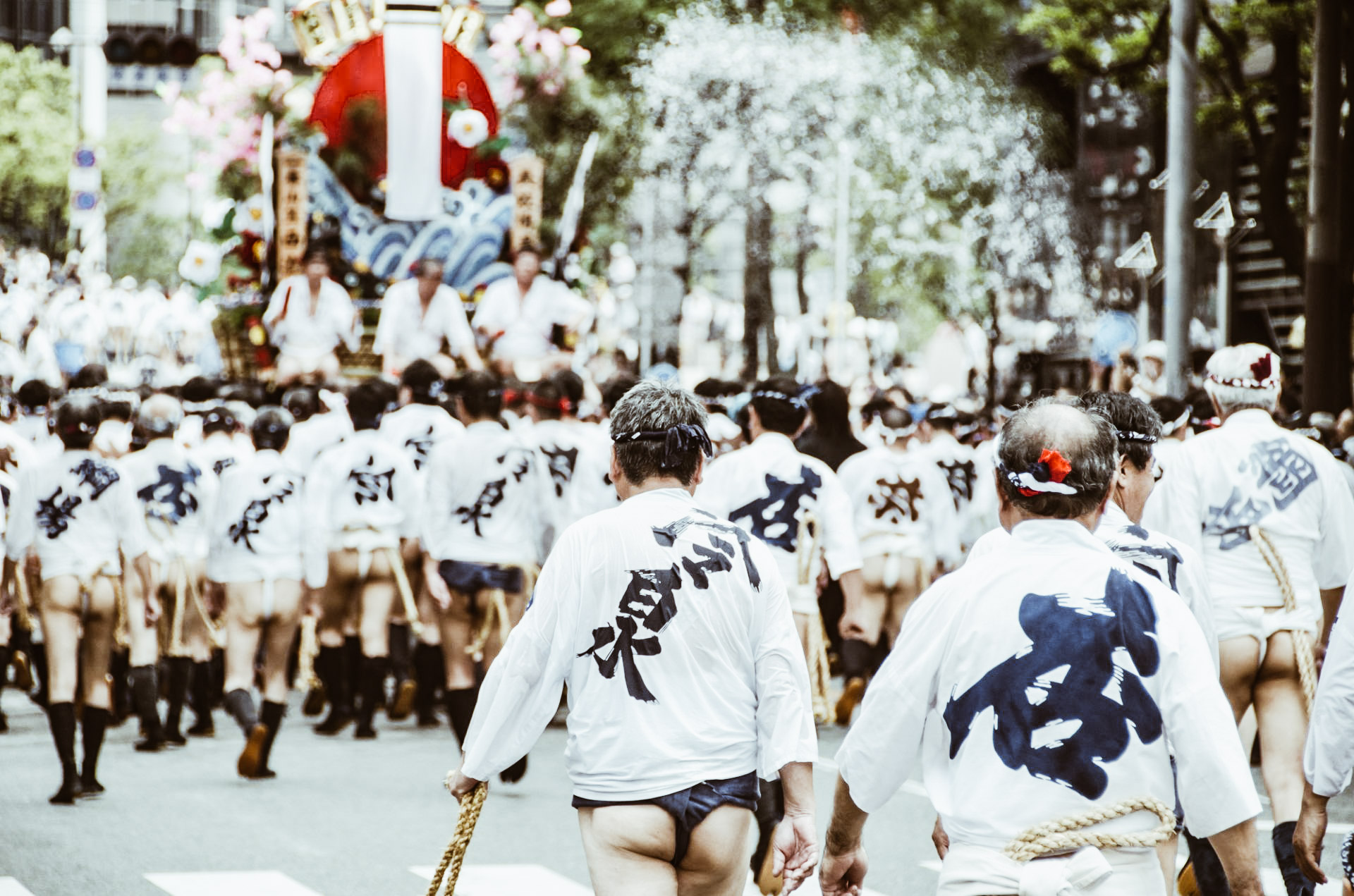
photo credits: japanbullet.com, goodlucktripjapan.com
The participants, who in this case are exclusively men, are organized in 7 Nagare (teams): Daikoku, Higashi, Nakasu, Nishi, Chiyo, Ebisu and Doi. On 1 and 2 July, each district carries its own richly decorated cart, the Kazariyama, which remains on display for a week. Thus the Oshioitori is celebrated, that is the purification of the members of the 7 Nagare. After the prayer, these teams then move from the Kushida temple and go to Hakozakihama beach. Here they take sand to applaud the setting sun. Each of them wears a Mizuhappi (a short jacket), a Shimekomi (the loincloth) and a Tenugui (a band on the head that changes color according to the role played).

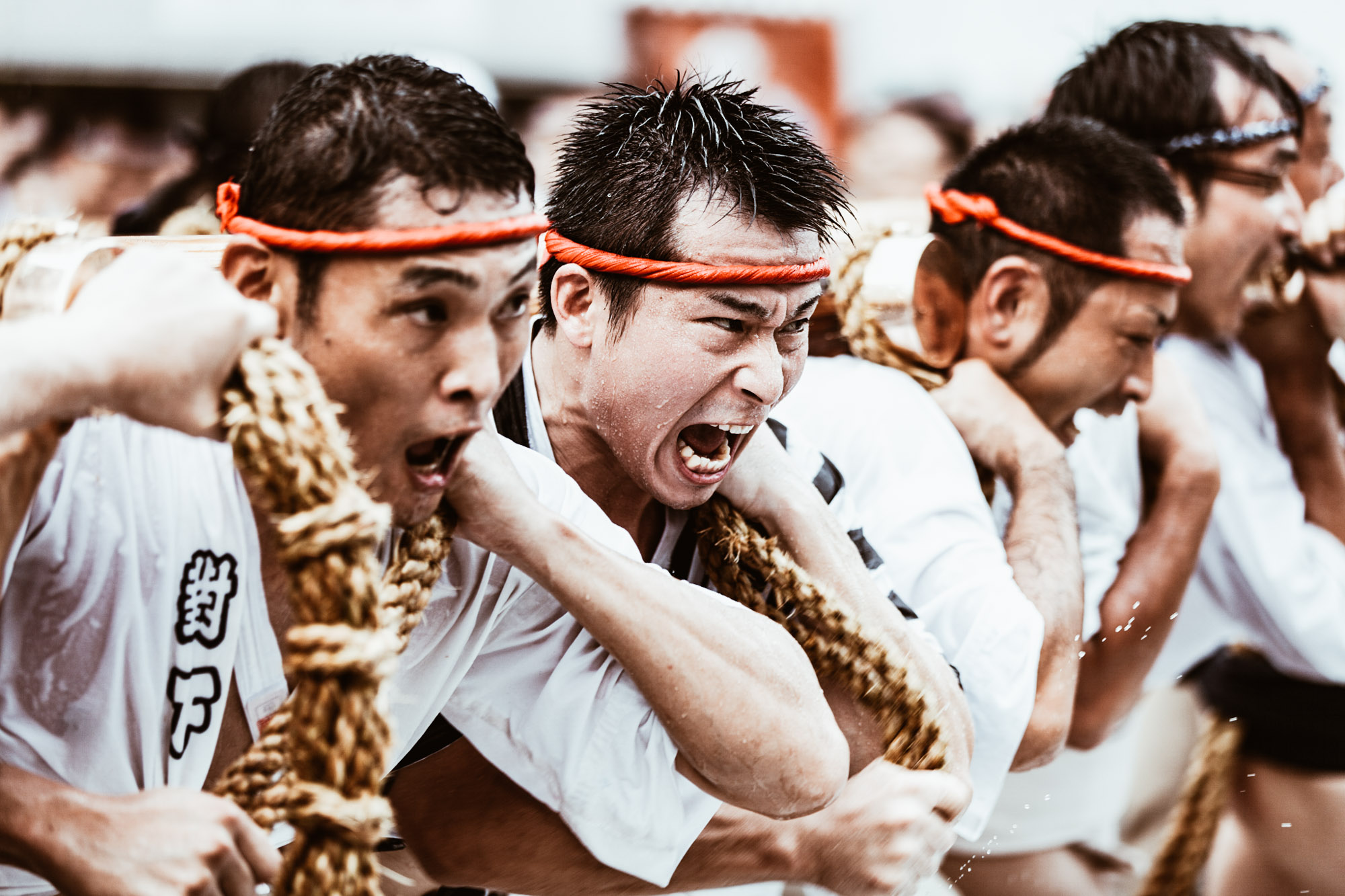
photo credits: shin7d
Training for the Hakata Gion Yamakasa Matsuri
Consisting of a race with wagons in which the winner will be those who have traveled 5 km in the shortest possible time, the participants must be ready for the grand finale. It begins with the Nagaregaki, the moment in which each team raises its wagon for the first time along the streets of its own district.
The next day is the time of the Asayama and the Tanagaregaki: the elderly receive the respect of the youngest and are able to sit on the Kazariyama transported in the opponents' neighborhoods.
The next day it is still the turn of the Oiyama-Narashi which starts precisely at 3.59 pm. This is a sort of general rehearsal in which the race is timed, thus increasing the tension and the spirit of competition that now begins to meander through the Nagare.
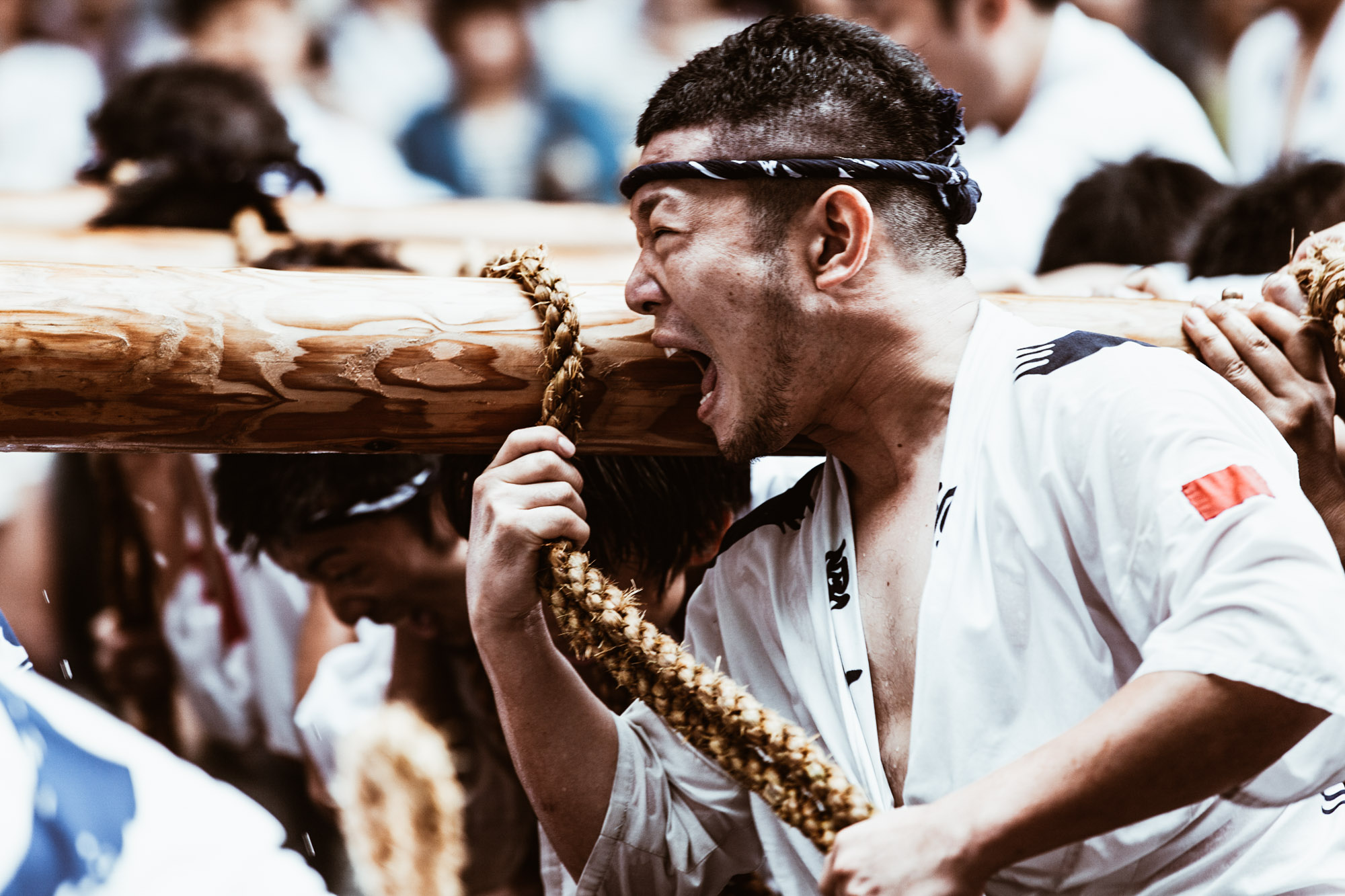
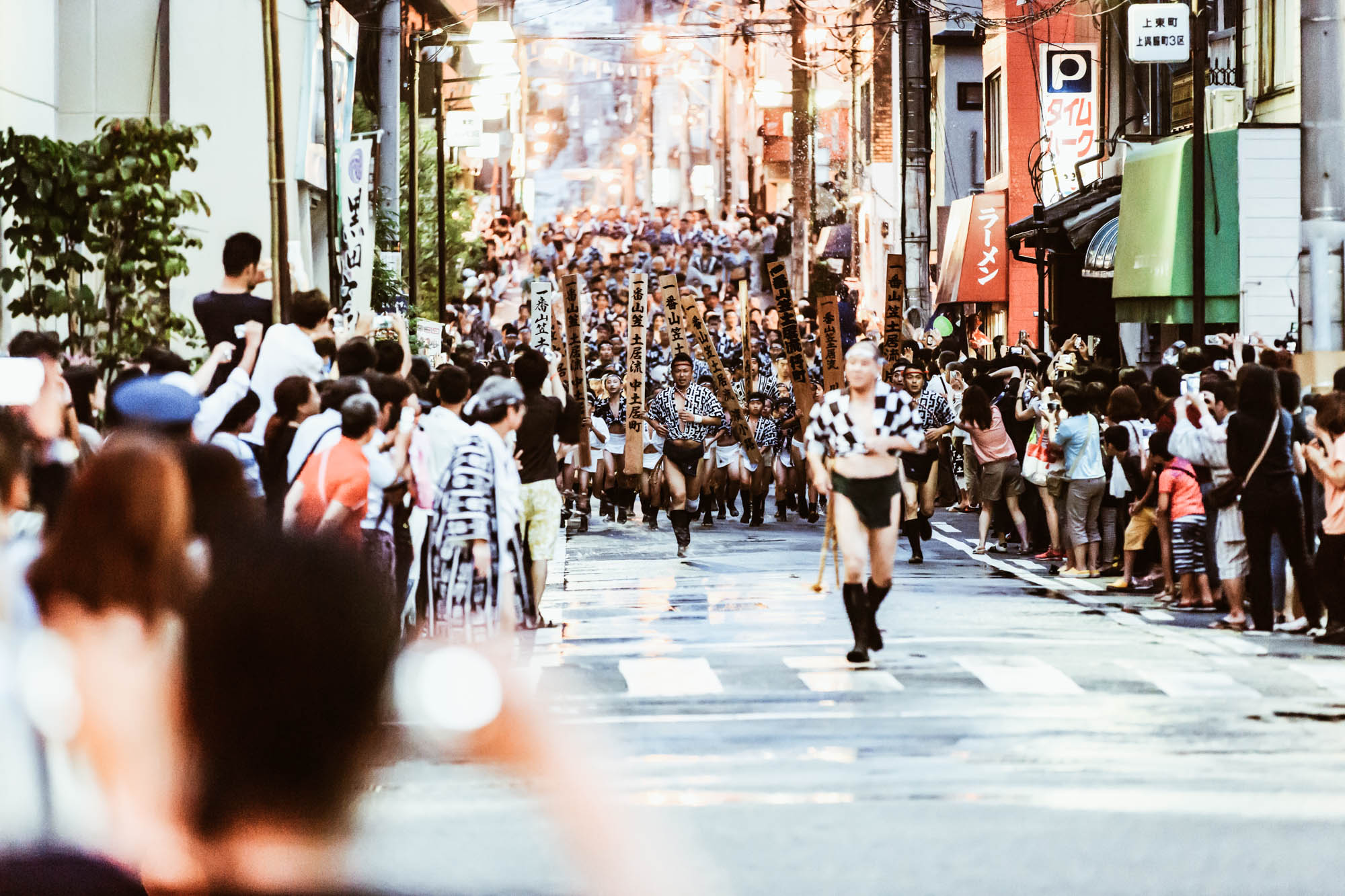
photo credits: shin7d, tak_orange
The last 3 days are the most challenging. During Shudan Yamamise the Kazariyama crosses the Naka river entering Fukuoka. During this event, the mayor and city personalities take a 1.2 km ride on the wagon. The penultimate day is that of Nagaregaki, the last training. Finally, on July 15th at 4.59 am Kushida-iri begins. The first wagon fires fast, followed by the second after 6 minutes and all the others every 5 minutes. The 5 km run will decide the winning team.
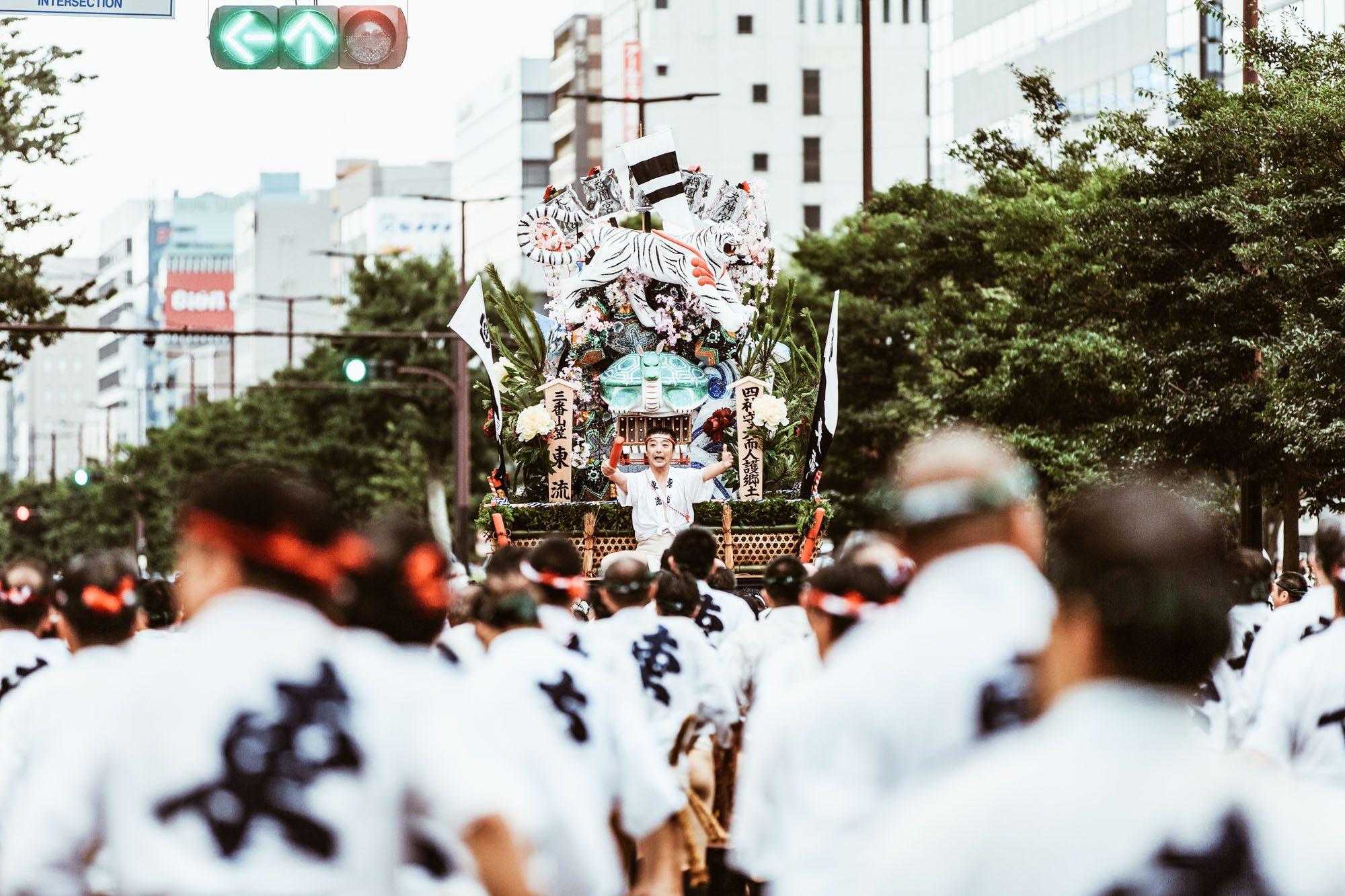

photo credits: tak_orange
Reach Hakata
The festival takes place in the Hakata district of Fukuoka. Kushida Shrine is a five-minute walk from Canal City Hakata or Gion Subway Station. Alternatively, you can reach Hakata station within a 15-20 minute walk. It is convenient to walk 10 minutes from JR Hakata station to the Kushida Shrine. Or you can get there with the Kûkô-sen subway line, get off at "Nakasu Kawabata" station and walk for 5 minutes.
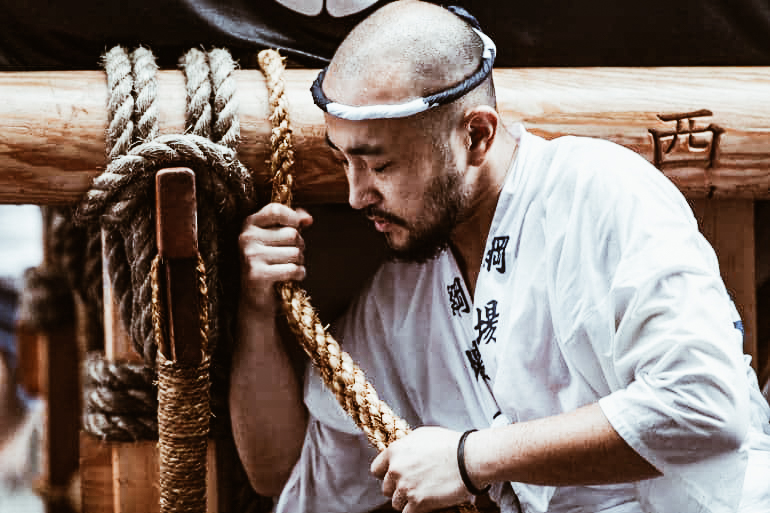
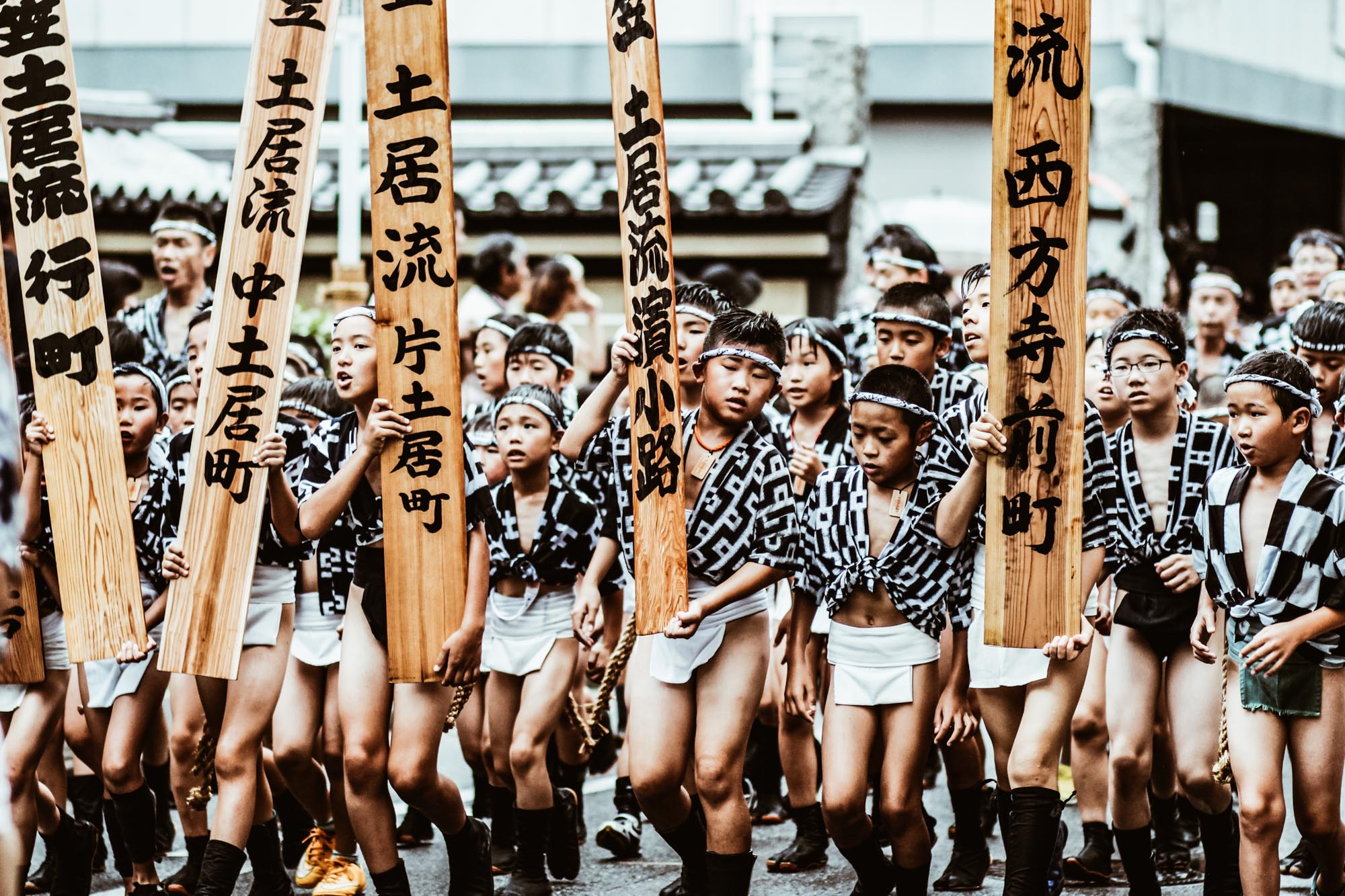
photo credits: japancheapo.com, otsukarekun
Japan History: Sakamoto Ryōma
Sakamoto Ryōma (January 3, 1836 - December 10, 1867) is still recognized as one of the most important figures of the Tokugawa Shogunate and one of the greatest heroes of the Edo period.
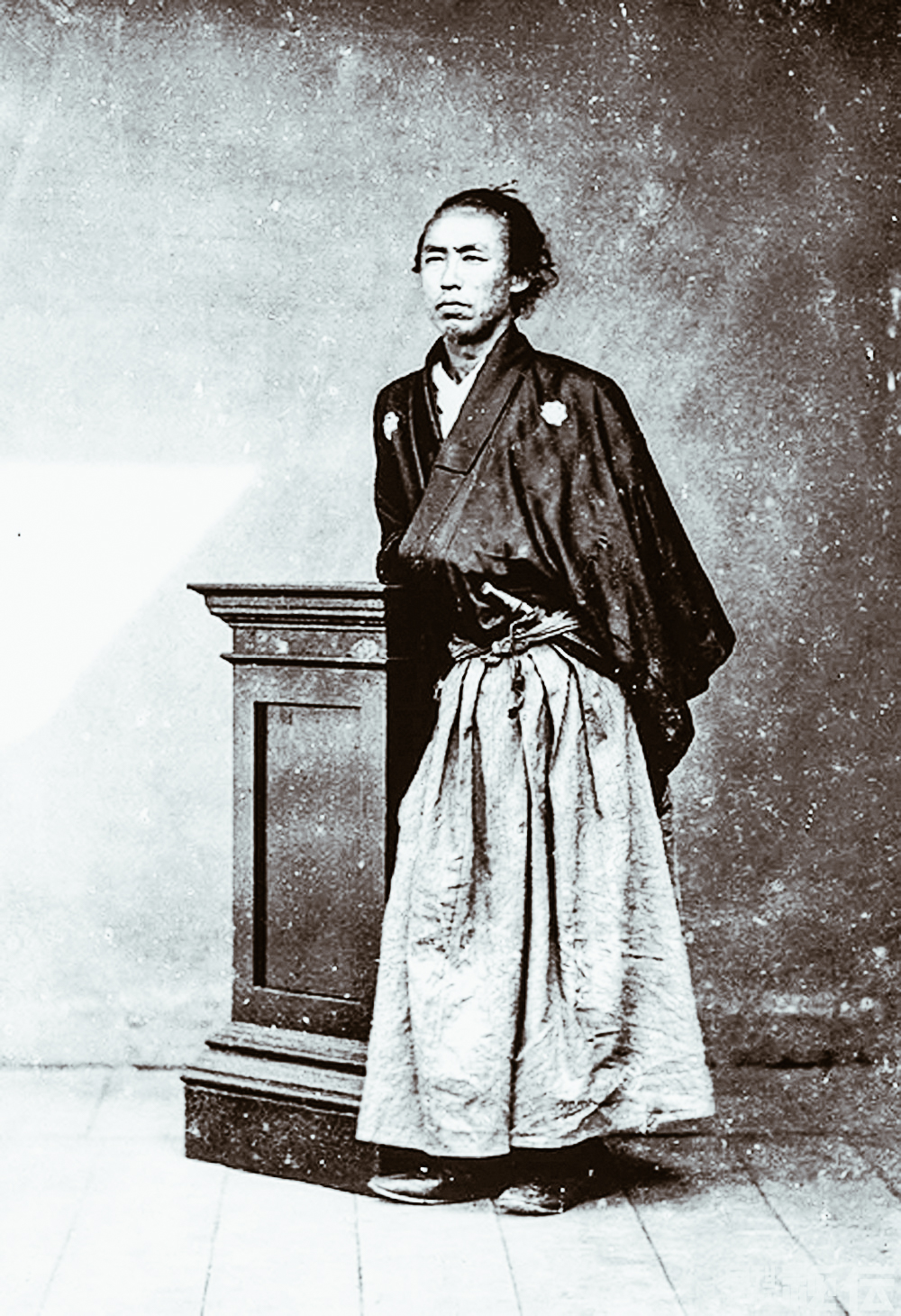
photo credits: budojapan.com
Early youth
He was born on the island of Shikoku, in the Tosa Han (toda's Kōchi Prefecture) on the fifteenth day of the eleventh month of Tenpō according to the Japanese calendar. His family was famous for being a great sake producer, thus obtaining the lowest rank of the Samurai category, the Gōshi (Samurai of the countryside). Tosa had a very clear separation between Joshi (high-ranking samurai) and Kashi (low-ranking samurai). Even in Sakamoto Ryōma's generation, the samurai degree of his family remained Kashi. At the age of twelve, Ryōma was enrolled in a private school, but it didn't last long, because his inclination to studies wasn't very strong.
Thanks to his older sister, he then enrolled in the Oguri-Ryu fencing classes when he was 14, after being bullied at school. In adulthood, he was a master swordsman. In 1853 he was allowed by his clan to go to Edo to improve his skills as a swordsman. There he enrolled as a student at Hokushin Ittō-ryū Hyōhō Chiba-Dōjō, where he received his diploma. He then became Shihan at Chiba-Dōjō and taught Kenjutsu to students along with Chiba Jūtarō Kazutane, his close friend. In 1858 he returned to Kōchi. However, four years later the Commodore Perry of the United States arrived with a fleet to force Japan out of its centuries-old policy of national isolation. In the same year, movements against foreigners, anti-Tokugawa movements and in support of the Emperor began to form.
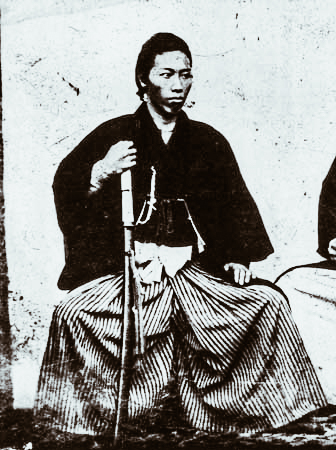
photo credits: jref.com
Sakamoto Ryōma and Takechi Hanpeita
His friend, Takechi Hanpeita (or Takechi Zuizan), organized Tosa's Loyalist Party "Kinnoto". Their political slogan was "Revere the emperor, expel the barbarians". The group consisted of about 2000 samurai, mostly of lower rank, who insisted on the reform of Tosa's government. As the group was not recognized, they began a plot to assassinate Yoshida Toyo, head of the Tosa domain. Ryōma participated in the plot without really supporting it.
Takechi asked for a revolution only for the Tosa clan, and Ryōma thought they would have to do something for all of Japan instead. He decided to leave Tosa and part with Takechi. In those days, no one was allowed to leave their clan without permission, on pain of death. One of Ryōma's sisters committed suicide precisely because of her brother's behavior.
In 1864, when the Tokugawa shogunate began to take a hard line, Ryōma fled to Kagoshima in the Satsuma Domain, under development as the main center for the anti-Tokugawa movement. Ryōma negotiated the secret alliance between the provinces of Chōshū and Satsuma. Satsuma and Chōshū were historically irreconcilable enemies, and Ryōma's position was seen as "neutral outsider".
Sakamoto Ryōma and the West
Ryōma was an admirer of democratic principles and studied the United States Congress and the British Parliament a lot. He loved these concepts so much that he took them as a model for the government of Japan after the Restoration.
Ryōma wrote the "Eight Proposals During the Expedition" while discussing the future model of the Japanese government with Gotō Shōjirō aboard a Tosa ship outside Nagasaki in 1867. Ryōma stressed the need for a democratically elected bicameral legislature and the drafting of a Constitution. Furthermore, he had considered the formation of a national army and fleet together with the regulation of gold and silver exchange rates. It is believed that Ryōma's proposals form the basis for the subsequent parliamentary system implemented after his death.
Sakamoto Ryōma and the Bakumatsu period
Ryōma pushed for national reform and left the domain, targeting Katsu Kaishu, a senior Tokugawa official.
When he finally managed to find his target, the latter calmly asked to be heard before he was killed. Katsu Kaishu then explained his plans to increase Japan's military strength through modernization and westernization. Instead of killing him as the plans were, Ryoma became his assistant. Together they created a naval force to be reckoned with.
Ryōma is often considered the "father of the Japanese Imperial Navy" because under the direction of Katsu Kaishū he worked to create a modern naval force. All this to allow Satsuma and Chōshū to stand comparison with the naval forces of the Tokugawa shogunate. Ryōma founded the private navy and the Kameyama Shachū trading company in the city of Nagasaki with the help of Satsuma.

photo credits: visitkochijapan.com
Chōshū's subsequent victory over the Tokugawa army in 1866 and the imminent collapse of the Tokugawa shogunate made Ryōma a precious figure for his former masters in Tosa. In fact, it is precisely in this period that he was recalled to Kōchi with many honors. Tosa's domain was anxious to get a negotiated agreement between the Shogun and the Emperor. This would have prevented Satchō's powerful Alliance from forcibly toppling Tokugawa and thus emerging as a new dominant force in the government of Japan. Ryōma again played a crucial role in the negotiations that led to the voluntary resignation of the Tokugawa Yoshinobu Shogun in 1867. With the arrival of the Meiji Restoration, thanks to Sakamoto Ryoma the Shogunate fell. Thus it was that Japan managed to come out of the 260-year Tokugawa Rule.
Ryōma often used the alias Saitani Umetarō (谷梅太郎) as he was often hunted by Bakufu supporters, like Shinsengumi members.
Sakamoto Ryōma's murder
On the night of December 10, 1867, Sakamoto Ryōma and his friend Nakaoka Shintaro stayed at the Omiya Inn in Kyoto. A group of assassins had gathered outside the inn. When one of them knocked on the door killing Ryōma's bodyguard, the rest of the group reached his room assassinating both him and Nakaoka.
The killers were never identified. However, members of the Shinsengumi and their leader Kondo Isami were accused and executed for the murder. Although the Mimawarigumi, members of the pro-Tokugawa group, confessed to the murder in 1870, no action was ever taken against them.
Sakamoto Ryōma's ultimate goal was not personal, but for the sake of Japan. His actions and beliefs have made him a national hero to this day.
Ryōma was a visionary who dreamed of an independent Japan without feudal traps. He was inspired by the example of the United States where "all men are created equal". He realized that to compete with an industrially and technologically advanced outside world, the Japanese had to modernize. It has also been seen as an intriguing mix of tradition and modernity. In fact, a symbol of these traits was his preference for the samurai dress with western footwear.
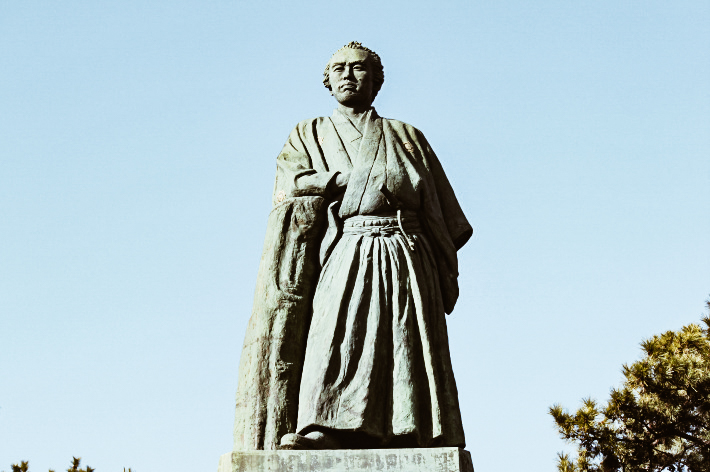
photo credits: tokyo2020.jp
Modern times
On 15 November 2003, the Kōchi airport was renamed Kōchi Ryōma Airport in his honor.
There is a Sakamoto Ryōma Memorial Museum (坂本龍馬記念館) south of Kōchi, with a large bronze statue of Ryoma overlooking the sea. The city of Kōchi has a number of Ryōma-themed attractions and places, including the Sakamoto Ryōma Birthplace Memorial. Furthermore, the Sakomoto Ryōma Hometown Museum shows the Kōchi center during Ryōma's childhood, including the relevant aspects that may have influenced his opinions. On November 15, 2009, the Hokkaido Sakamoto Ryōma memorial museum was built in Hakodate, Hokkaido.
Japan Folklore: Oni
Oni, yōkai in Japanese folklore
From a benevolent creature to an evil one. This is the slow transformation of the Oni (鬼), the Japanese mythological creatures that we Westerners call "demons", "trolls" or "orcs".
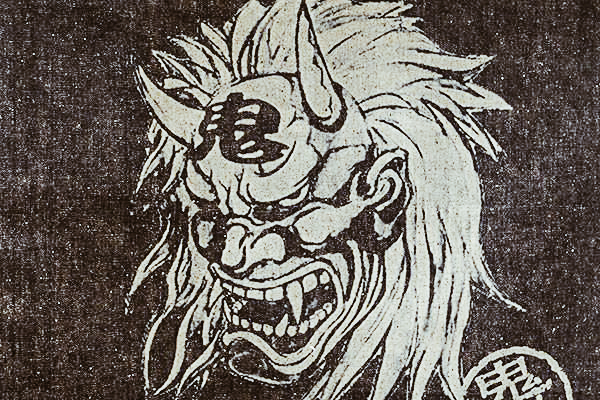
photo credits: tateandyoko.com
Before the Heian era, the Oni were good spirits able to ward off evil. However, during this era, they were relegated to the role of guardians of hell or torturers of damned souls. An example of this is the aka-oni (red demon) and the ao-oni (blue demon) described in the Buddhist tradition, which take on a negative connotation and become spirits to be kept away. In fact, they are considered as carriers of misfortune or agents of natural disasters.
Their appearance is certainly not reassuring. In fact, they are said to have animalistic and monstrous features, sometimes with many eyes and colored skin (red, blue, black, pink or green). They can also be clawed, wear tiger skin and carry kanabō (金棒, literally: "metal stick", a spiked war bat used in feudal Japan by the Samurai).
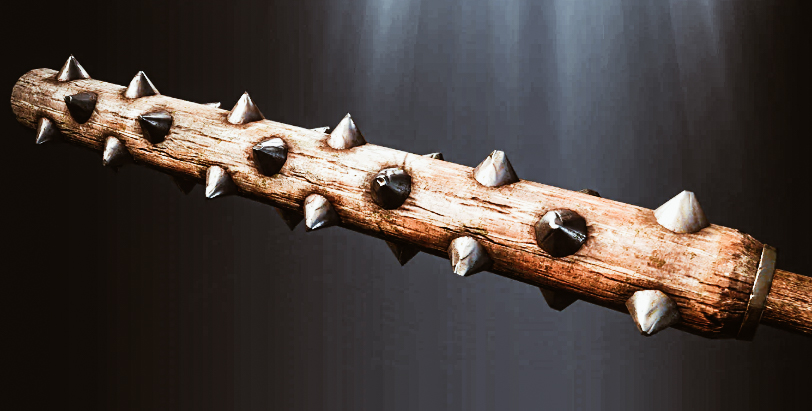
photo credits: forhonor.ubisoft.com
Demon Get out! Luck get inside!
In the Nara era, to avert the disasters that these spirits could provoke, people used to practice oniyarai (追儺), a ritual aimed at driving out the demon.
On the last day of each year, a person used to dress in the demon's clothes and was chased away with peach bows and reeds. Over time this custom turned into the Setsubun celebrations, in which people throw soybeans out of the house saying: "Oni wa soto! Fuku wa uchi! "(Oni out! Luck inside!).
Despite being considered evil spirits, in tradition, there are still traces of their benevolent nature. We find these during the parades when some men wear the Oni costume to ward off bad luck. They are also depicted on the tiles of some buildings for the same reason.
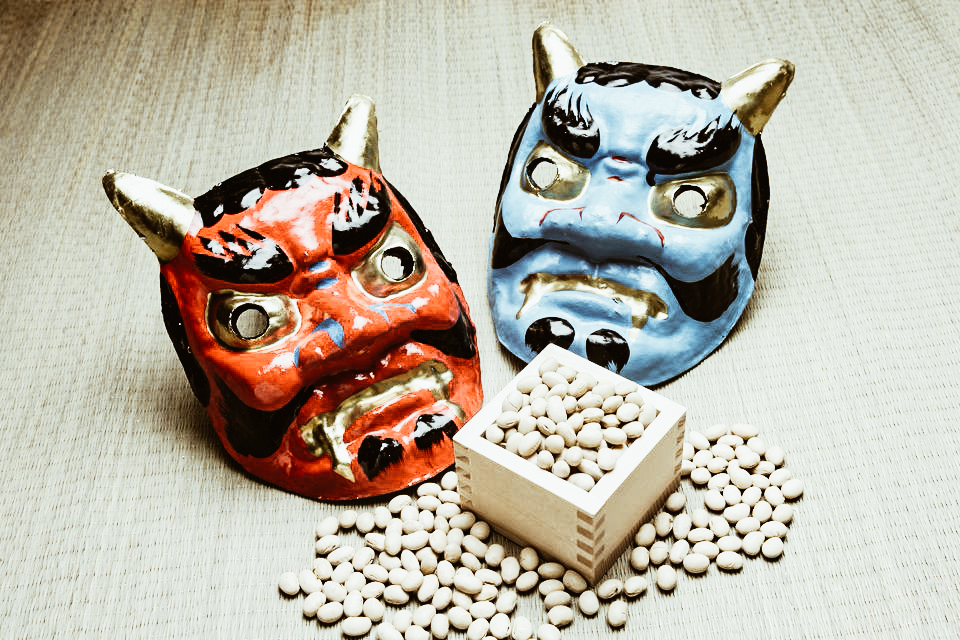
photo credits: tripsavvy.com
The many curiosities of modern culture
Today we meet these demons not only in folkloristic stories and nursery rhymes for children but also as protagonists of proverbs! In fact, it is said that "Even in the eyes of the oni tears arise" (鬼の目にも涙) to indicate that even the hardest heart sometimes feels pity. Another proverb is "The wife of an oni becomes an oni divinity" (鬼の女房鬼神がなる) which refers to our "disciple surpasses the master".
Of course, it was unthinkable not to use such a particular figure in animes and mangas! There are endless references to these spirits, and one of the most famous and well-known is Lamù, the main character of Rumiko Takahashi's manga. But it is not the only one. In fact, even in The Blue Seal by Chie Shinohara the Queen of the Oni is the protagonist. There is also Shutendoji by Gō Nagai whose work title refers to the legend of an oni of the same name.
Among the most played and entertaining horror/adventure video games we cannot forget Ao Oni. Here the main antagonist is a blue demon whose anime adaptation was broadcast in Japan between October 2nd, 2016 and January 8th, 2017. The 13 3-minute long episodes were also streamed in Italy under the title Aooni The Blue Monster (あおに〜じ・あにめぇしょん〜). Despite its simplicity, Ao Oni is terrifying thanks to the background music that gives the videogame the right scary atmosphere!

photo credits: giantbomb.com







